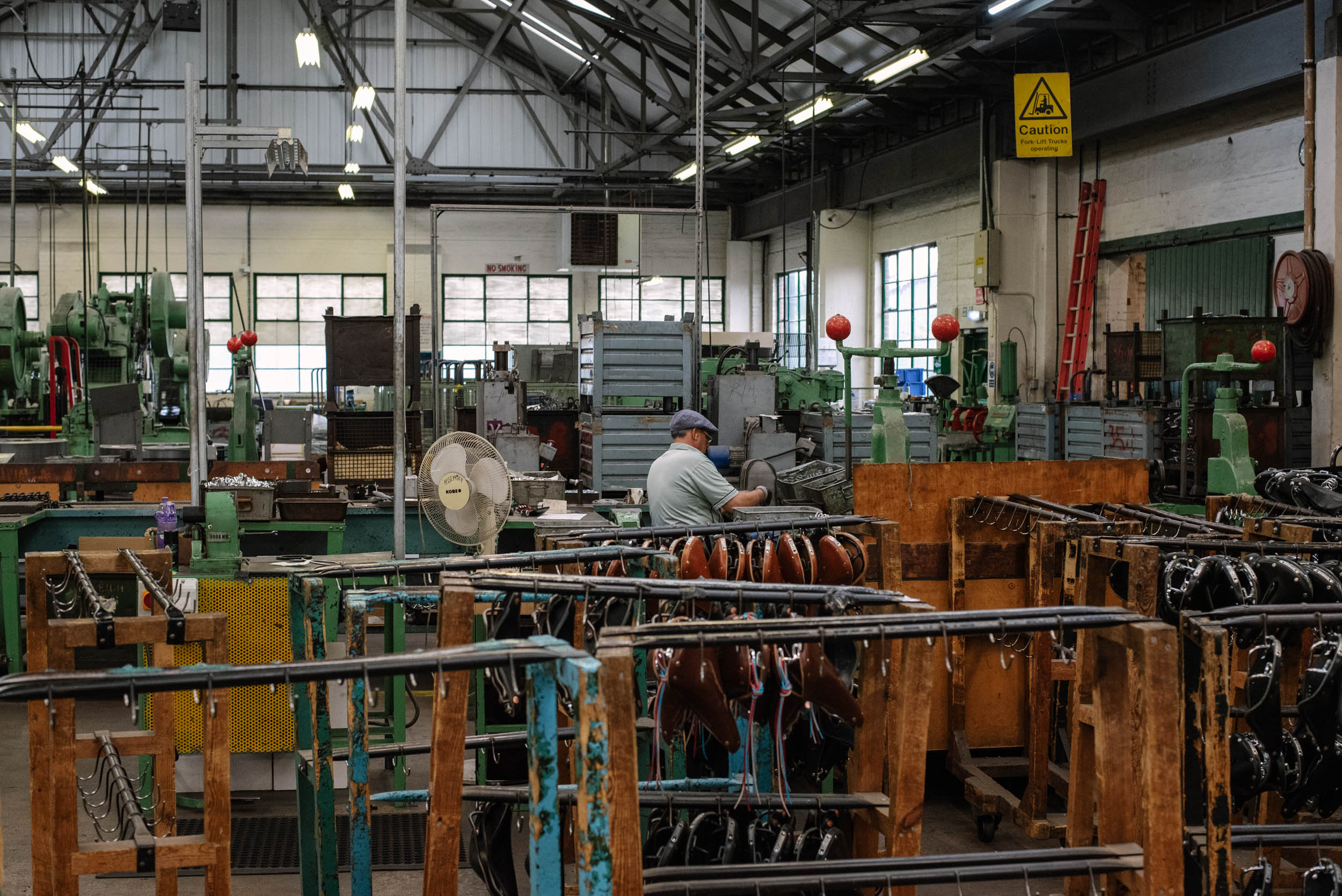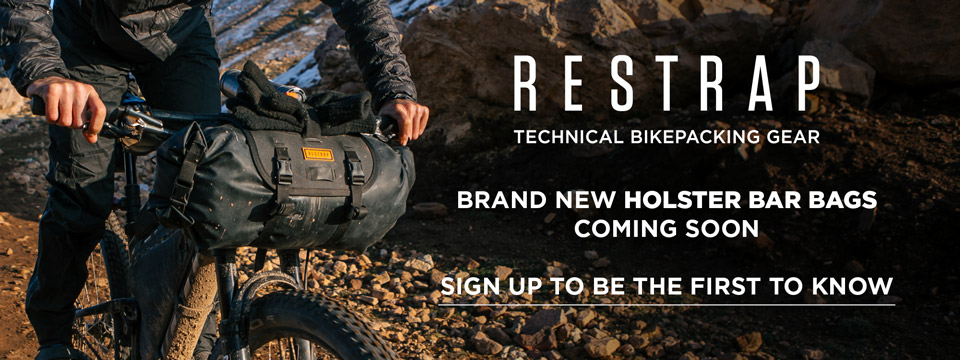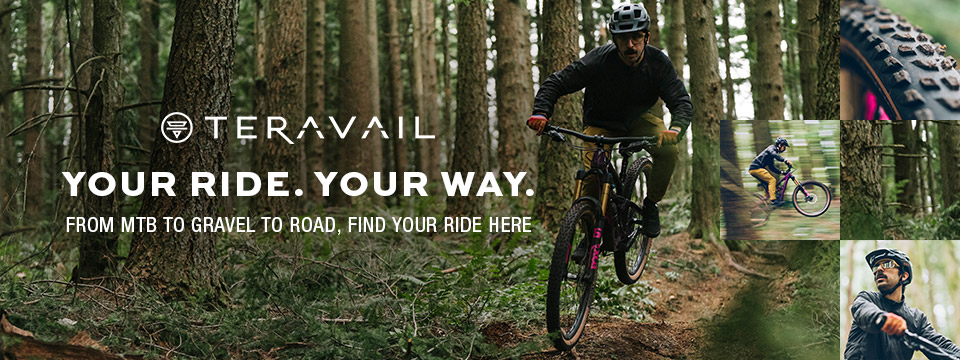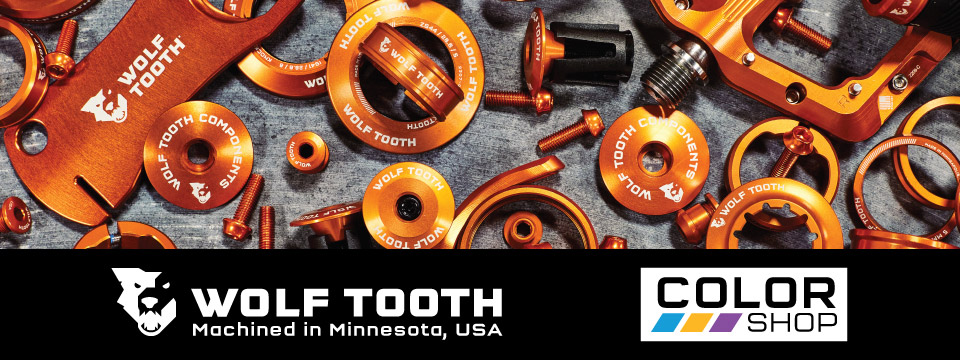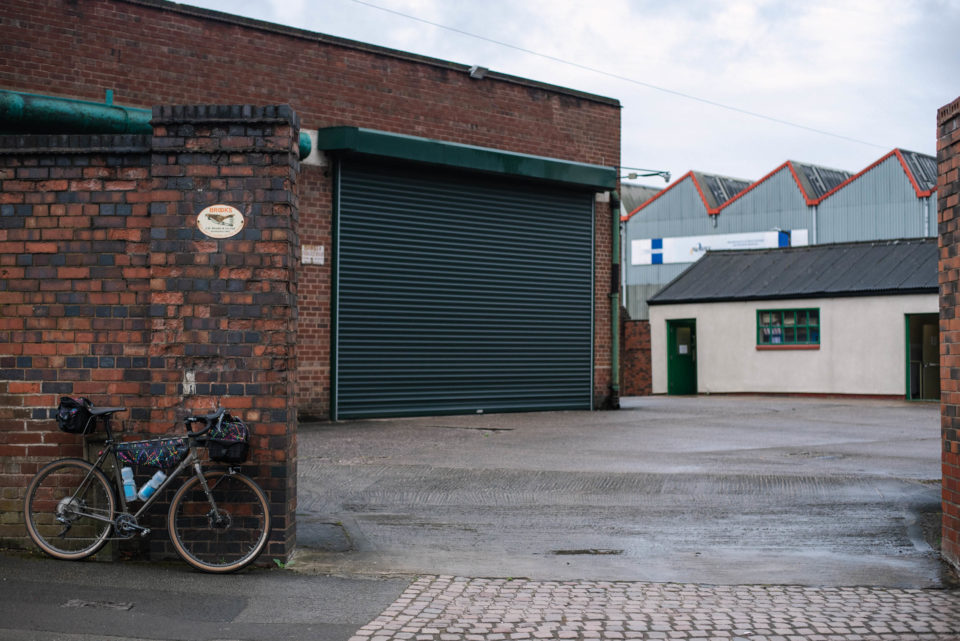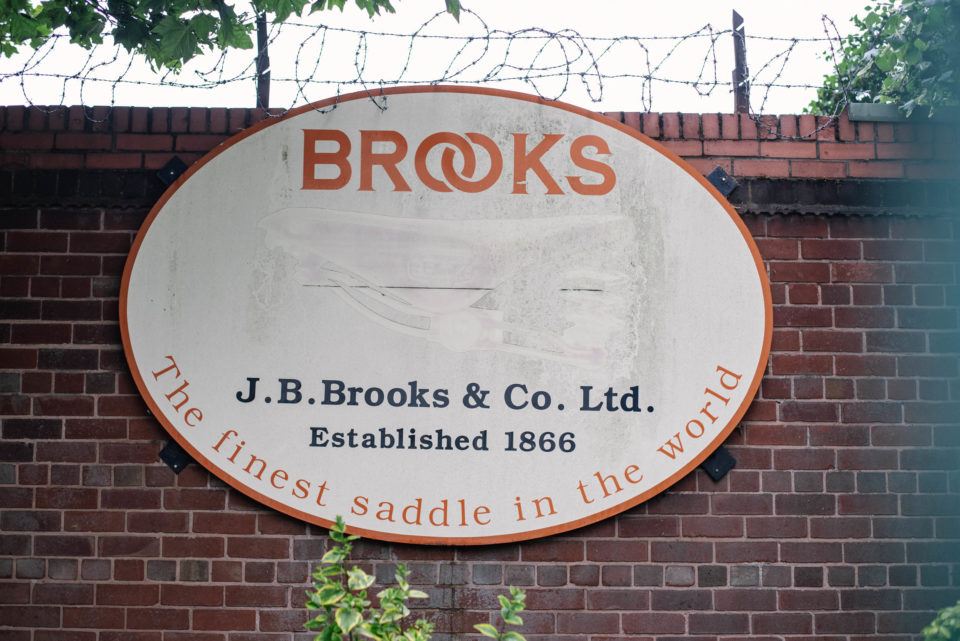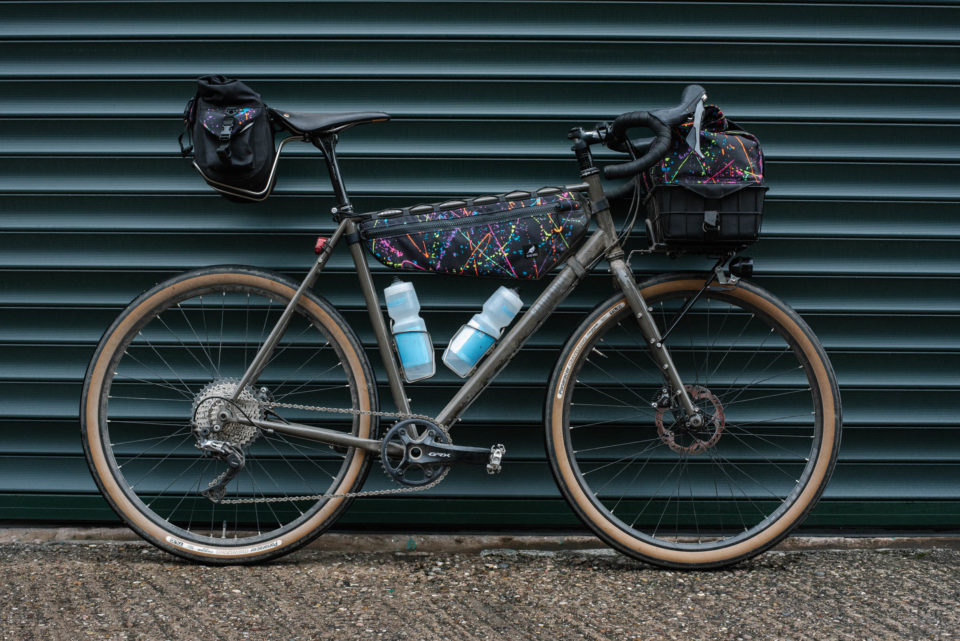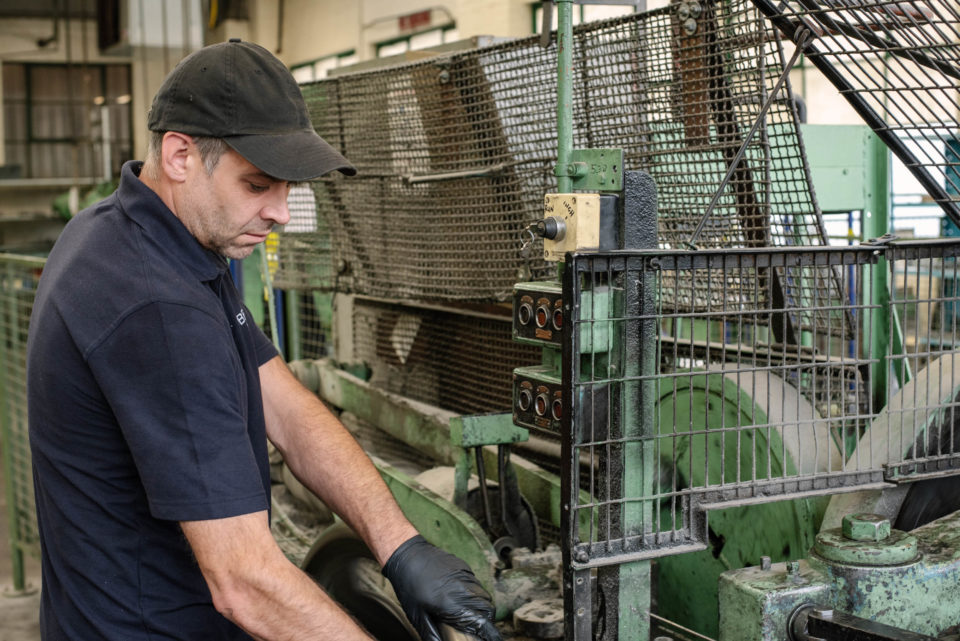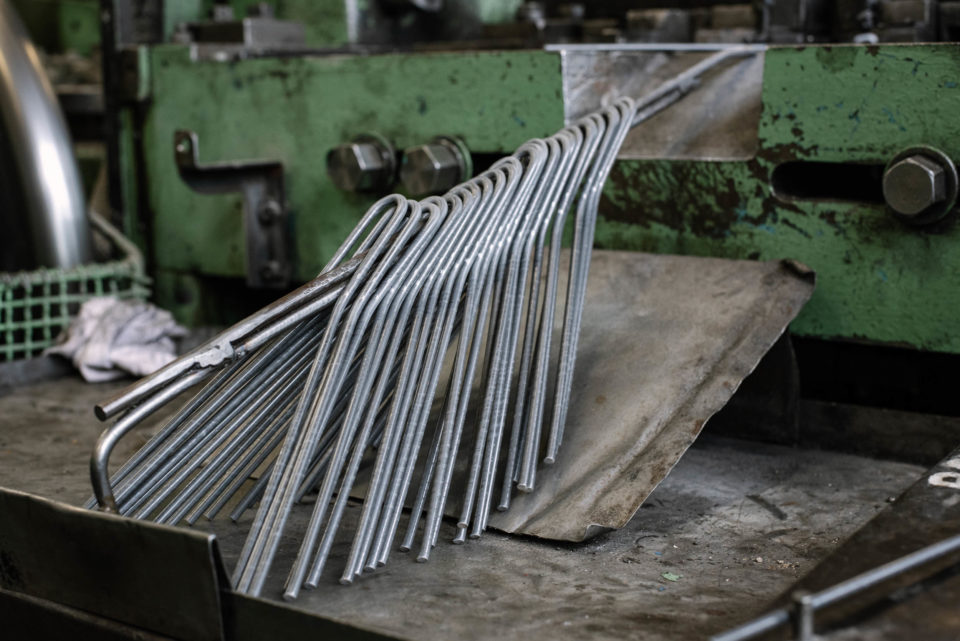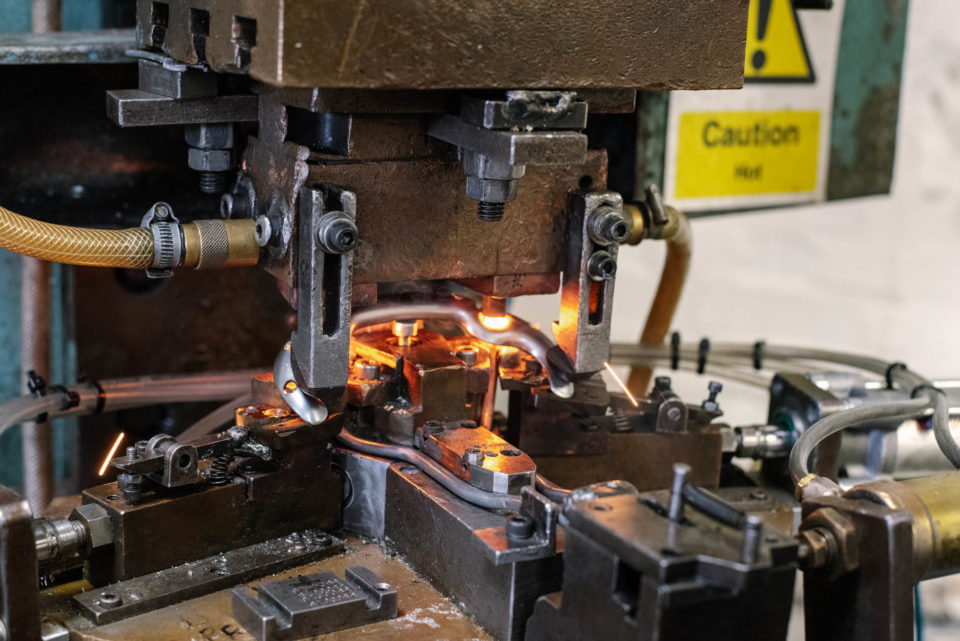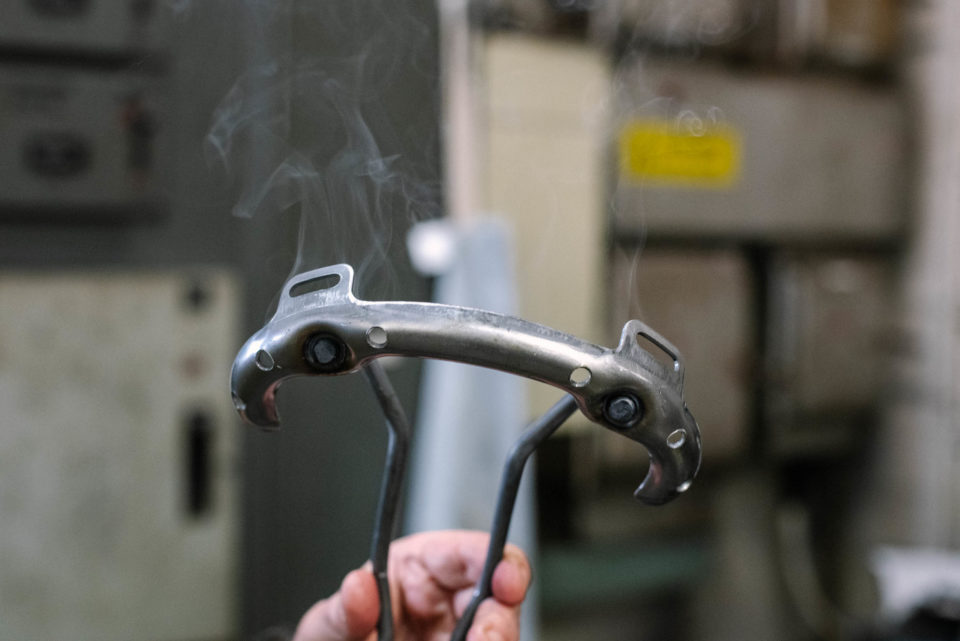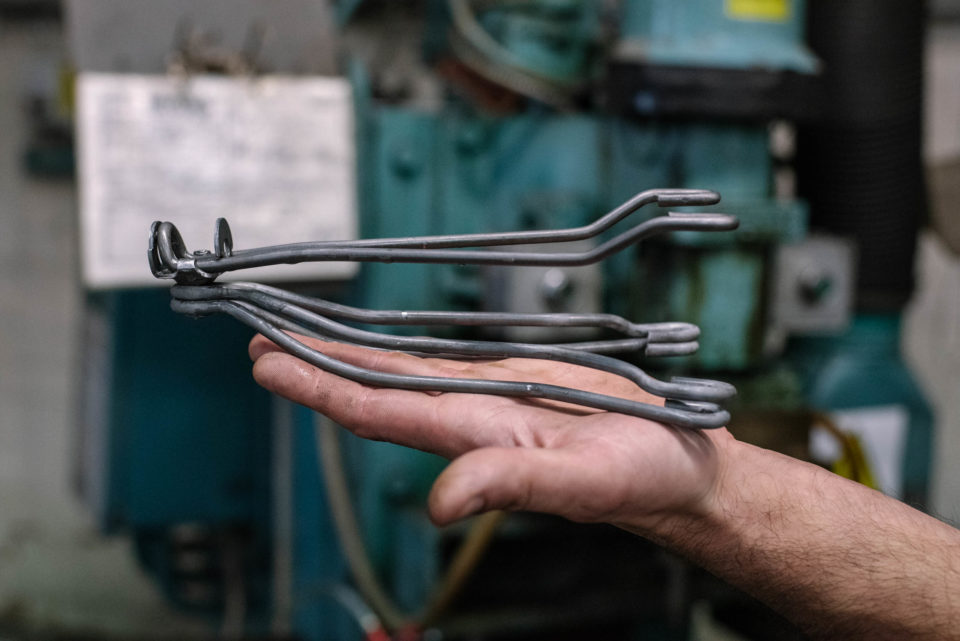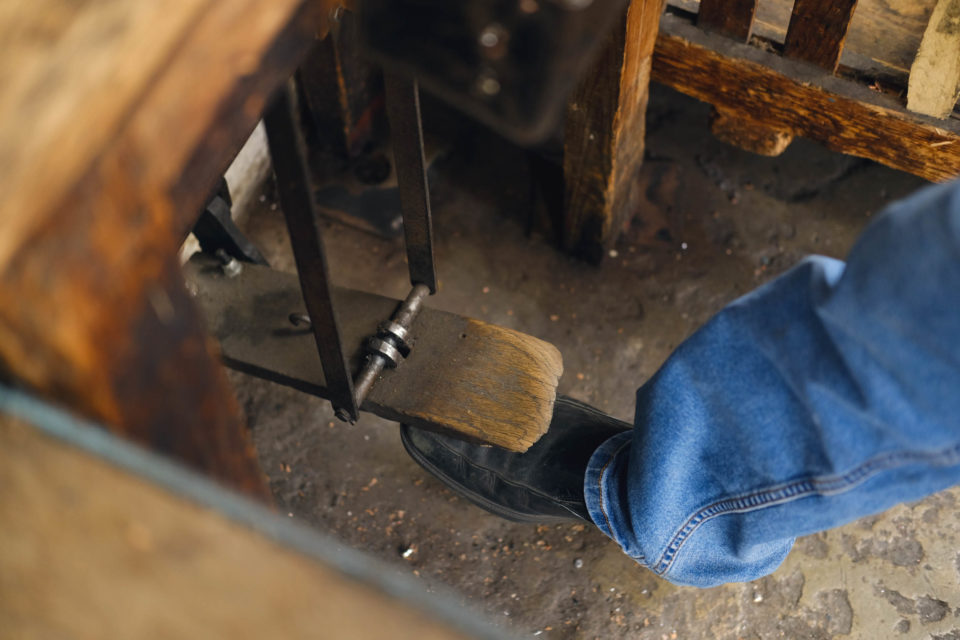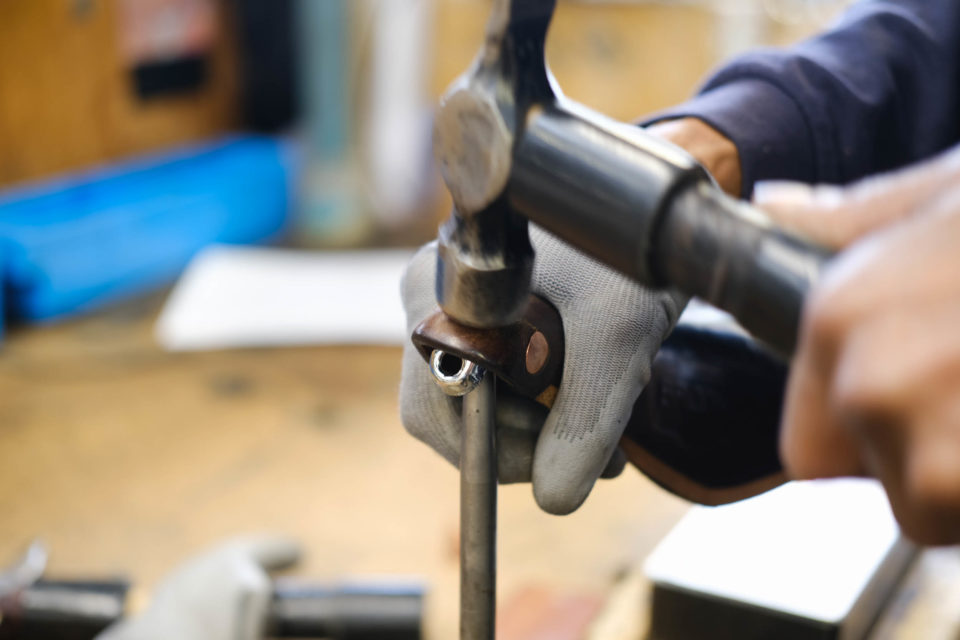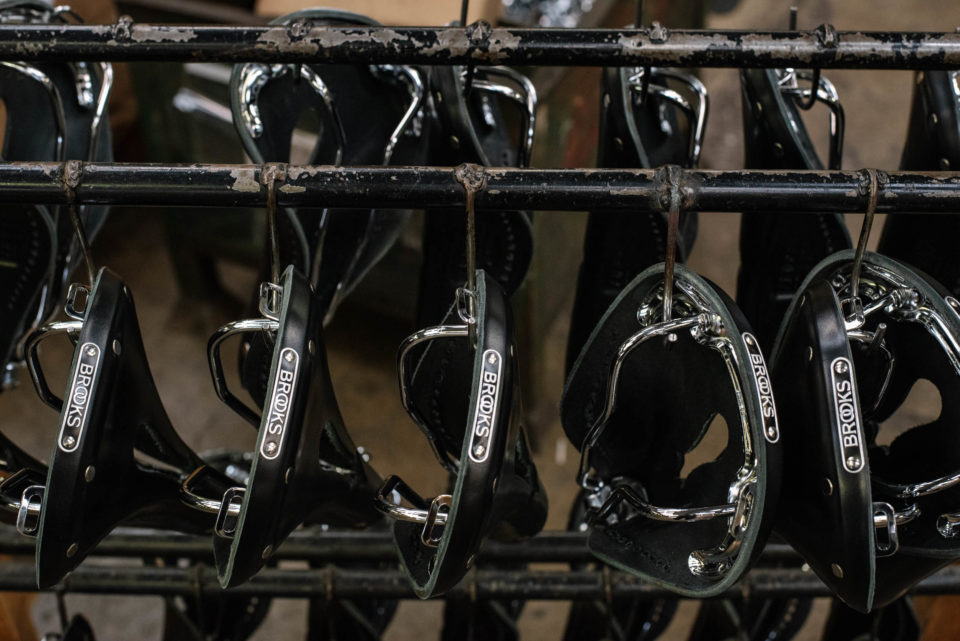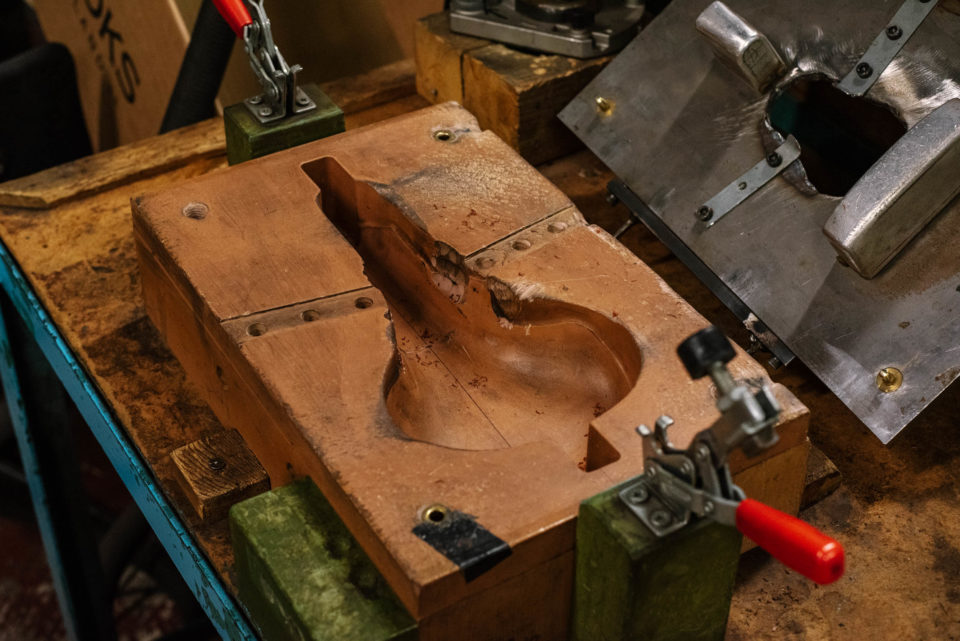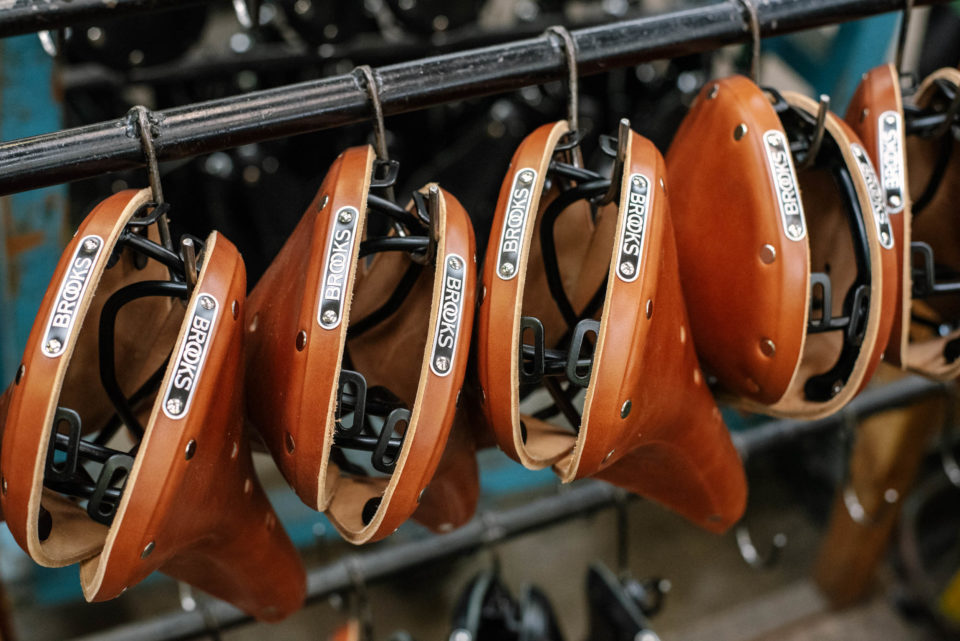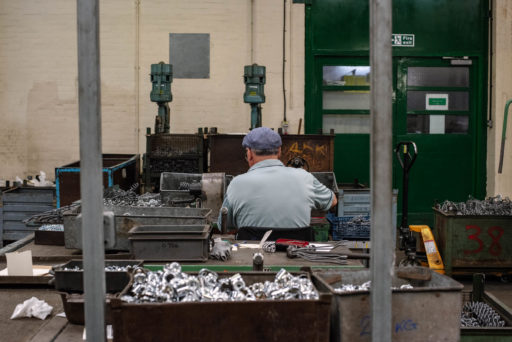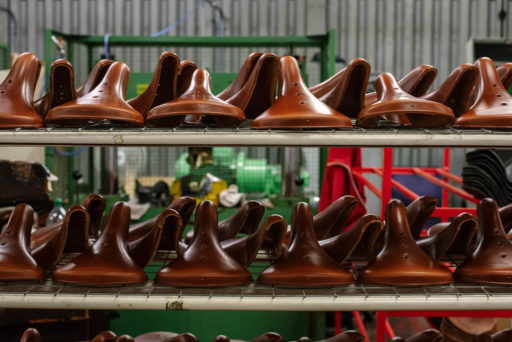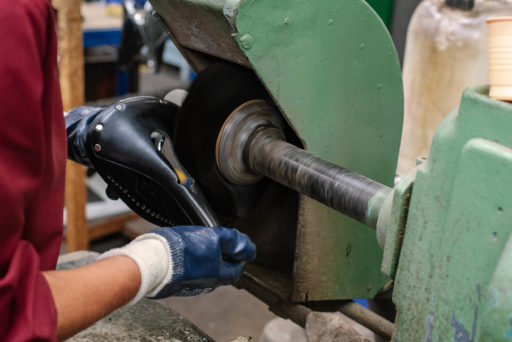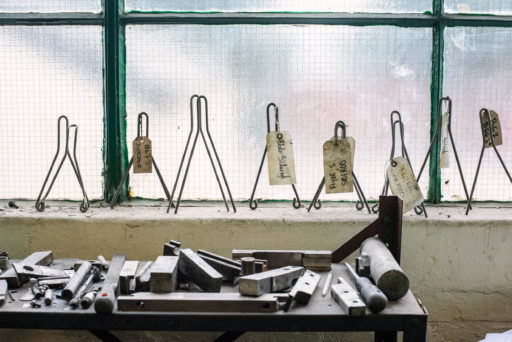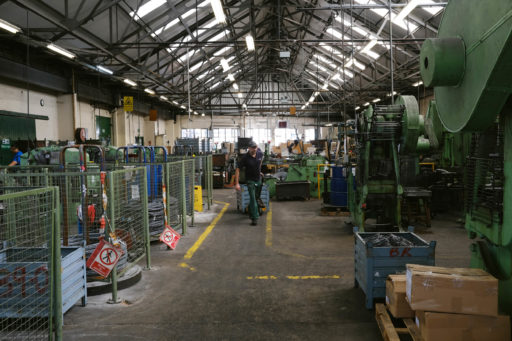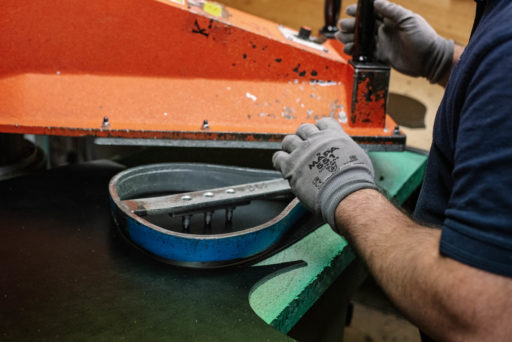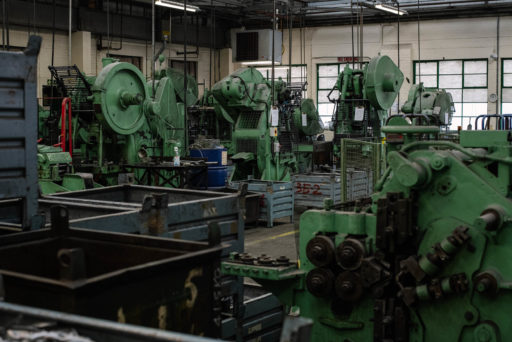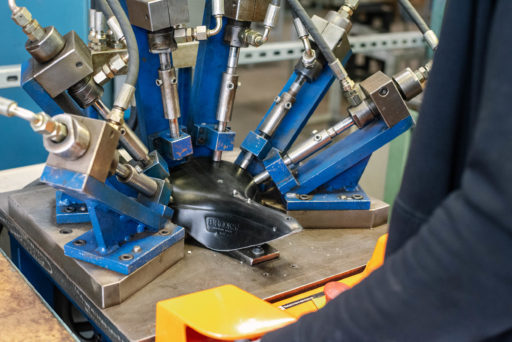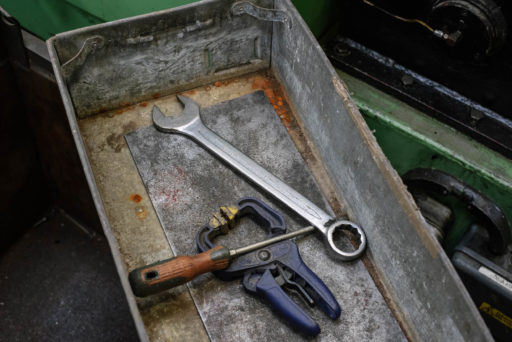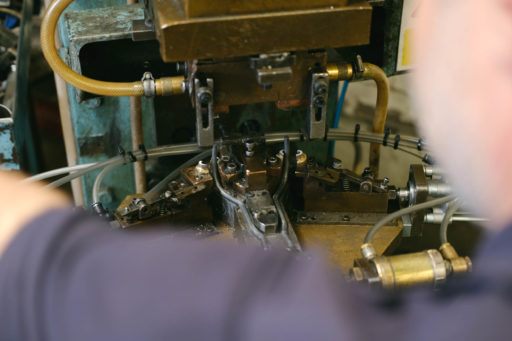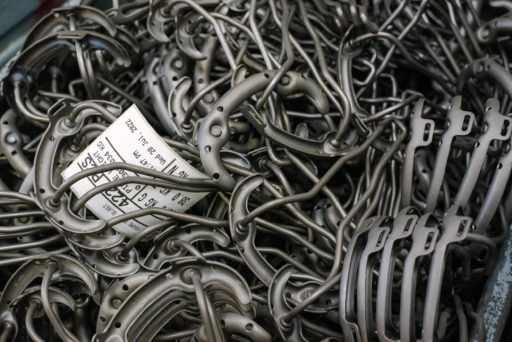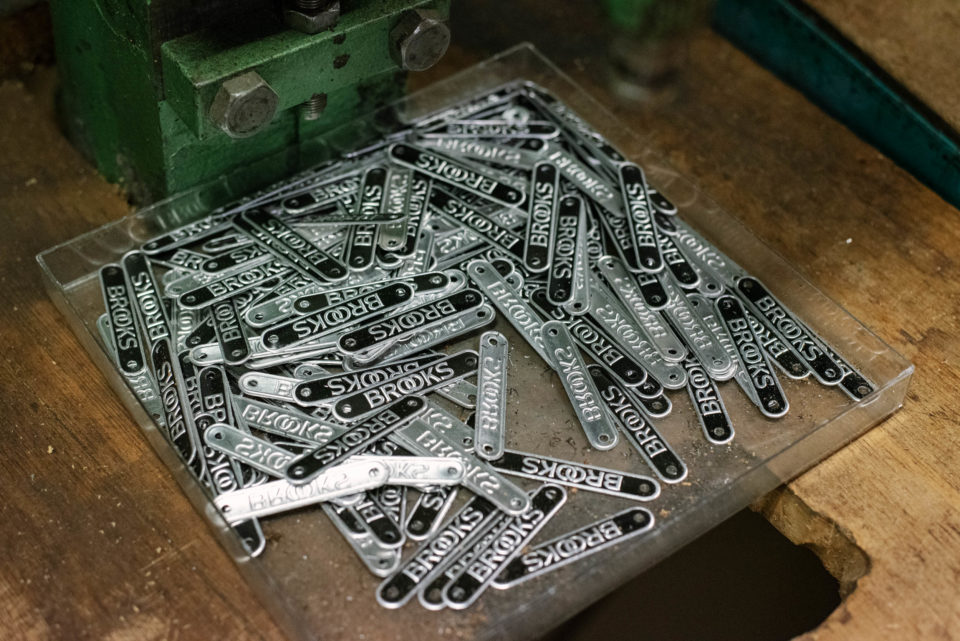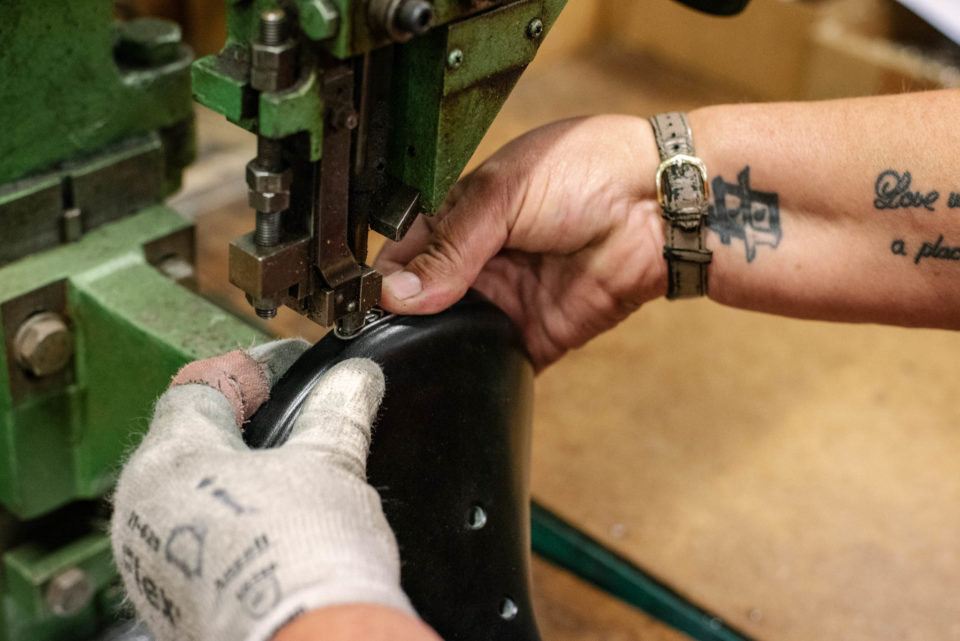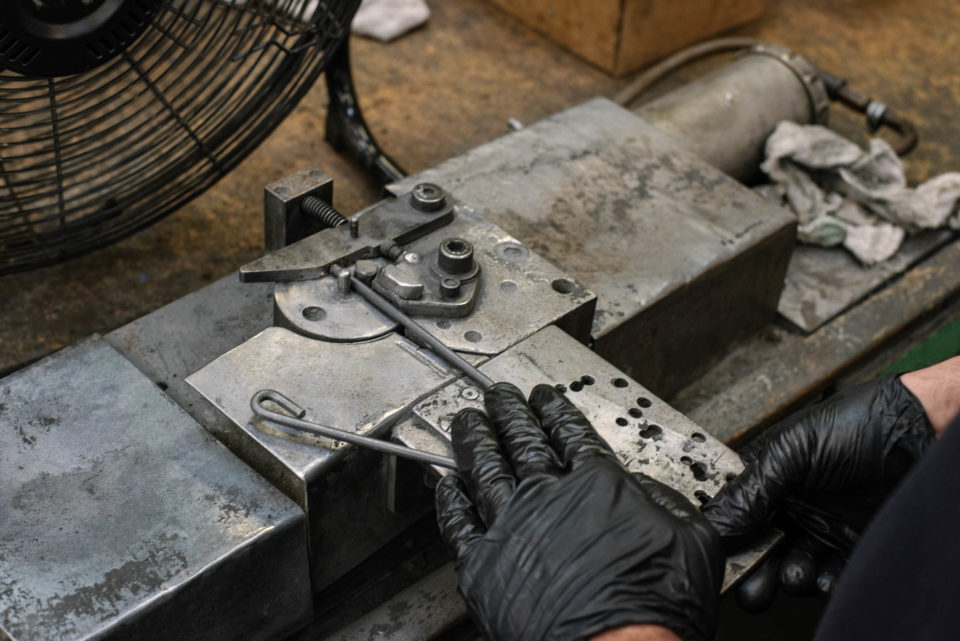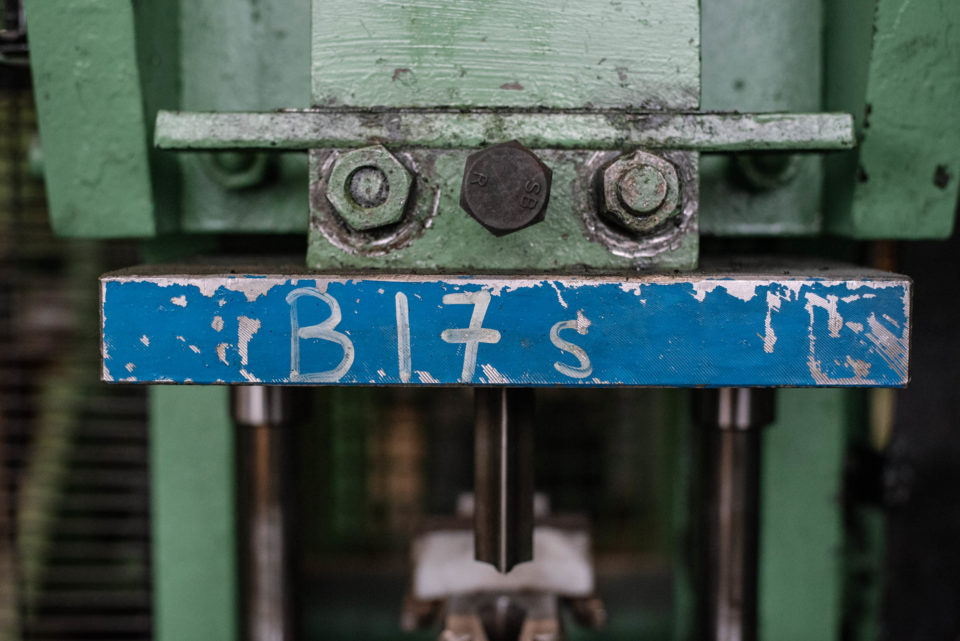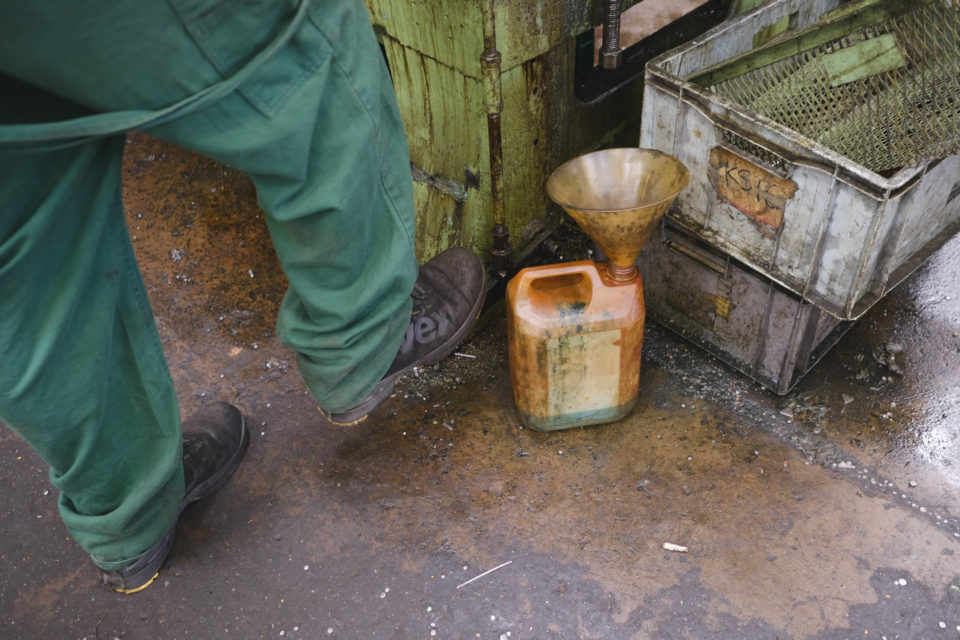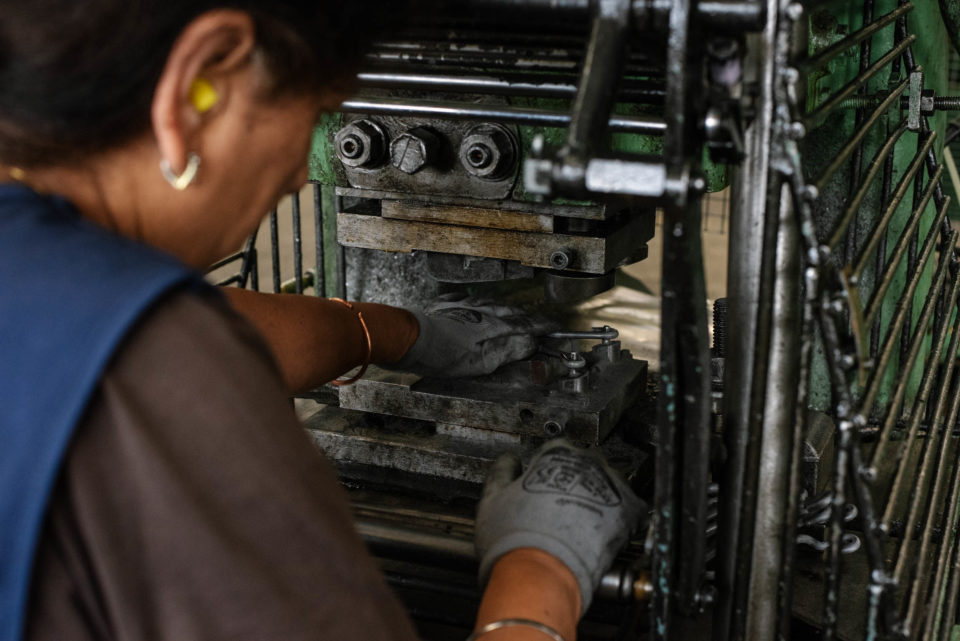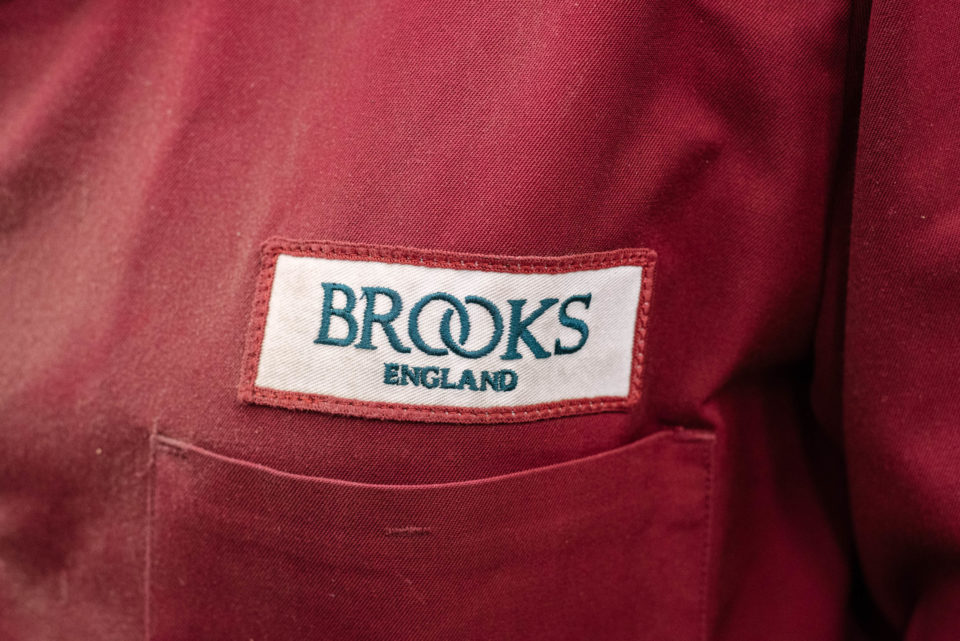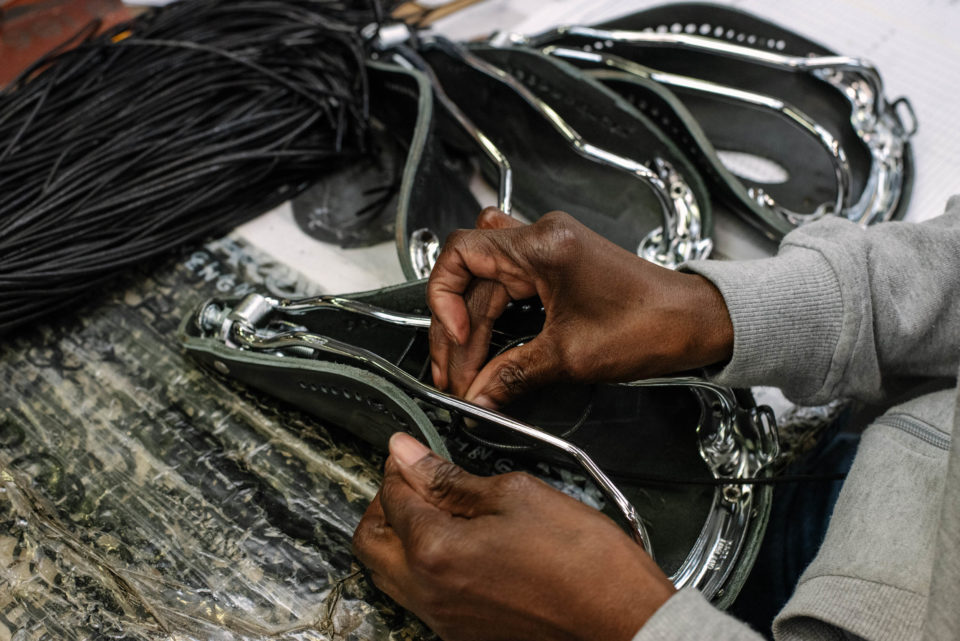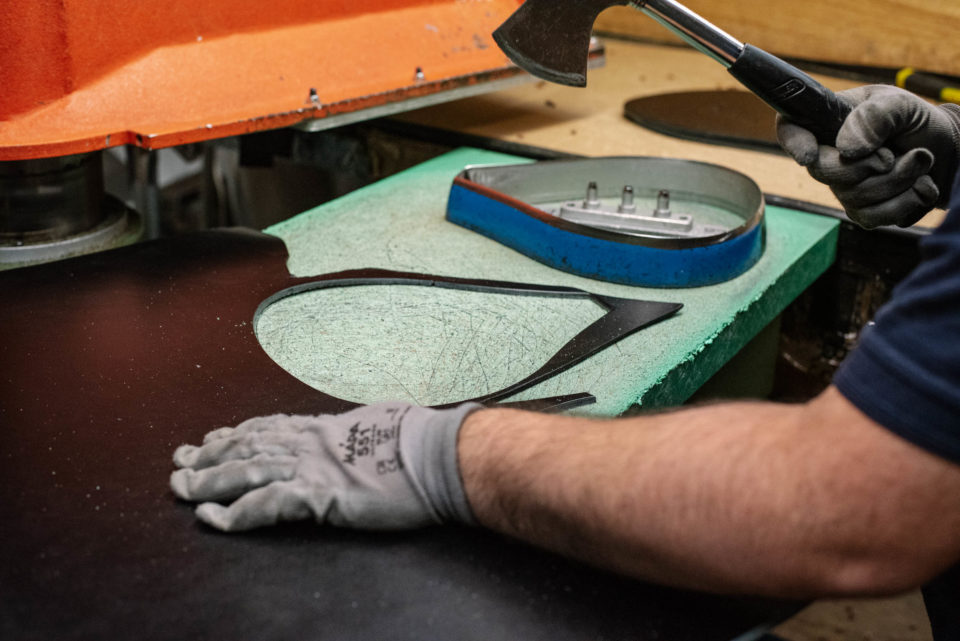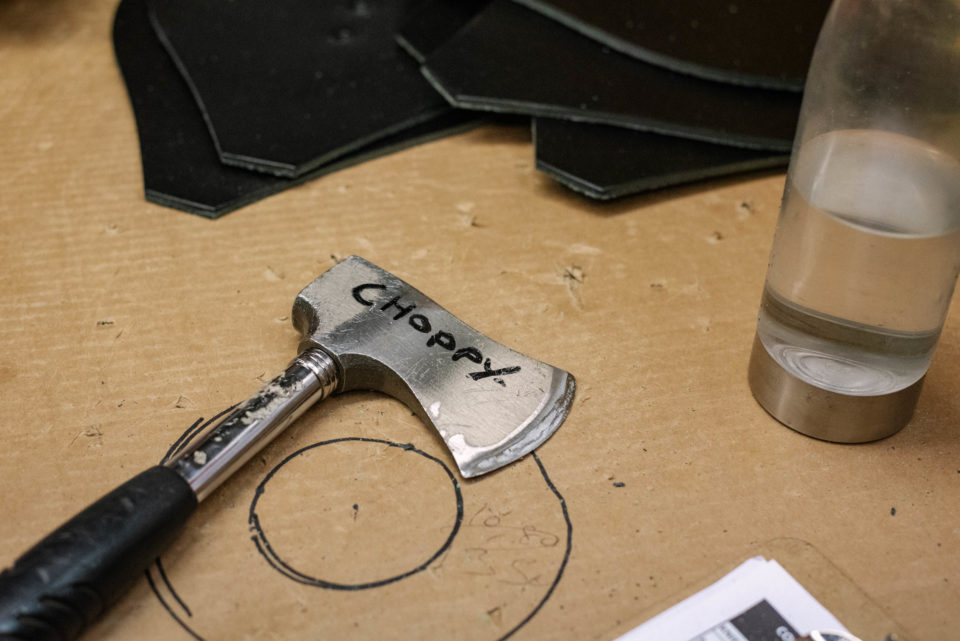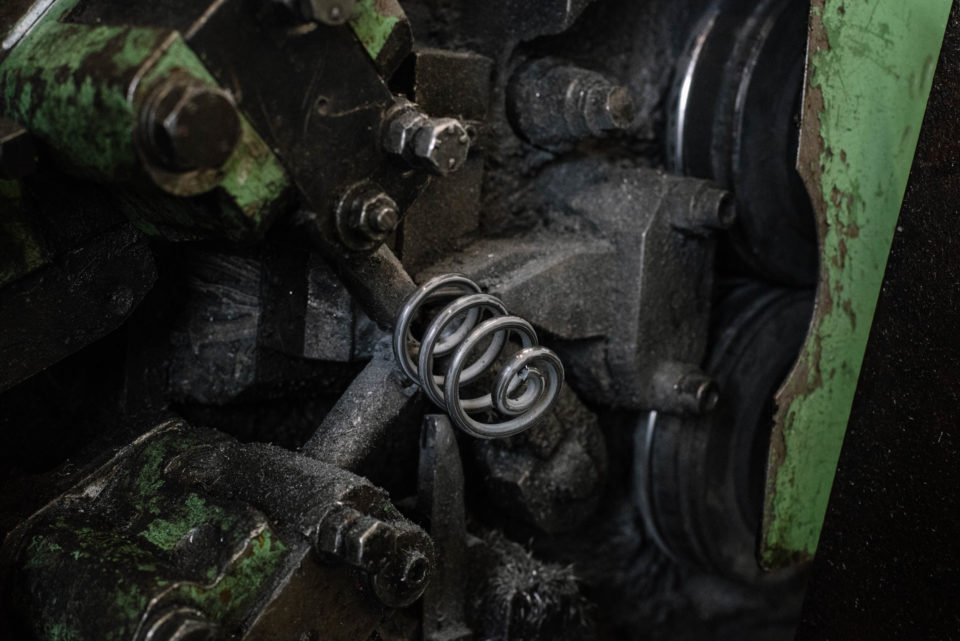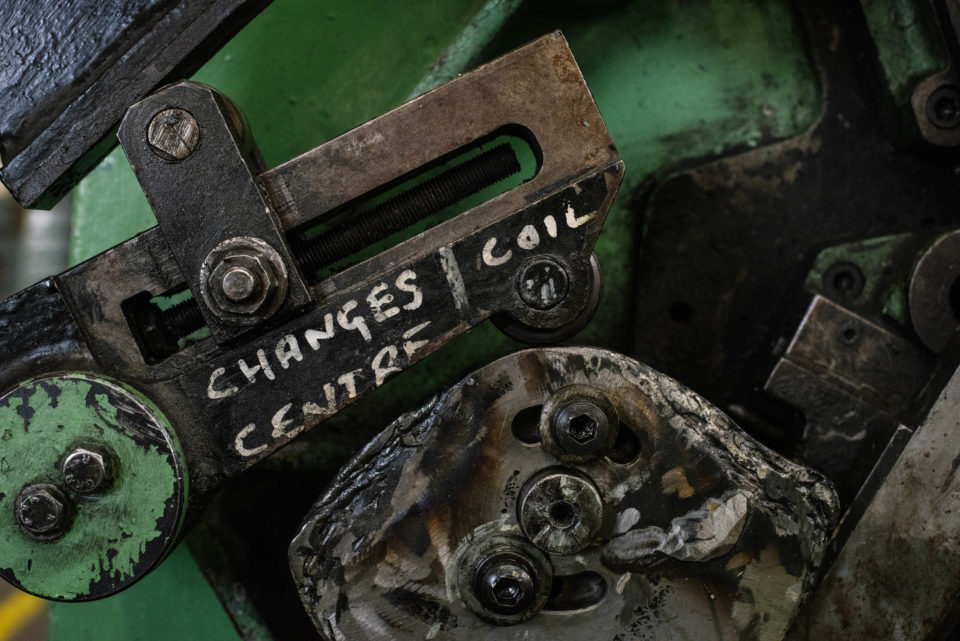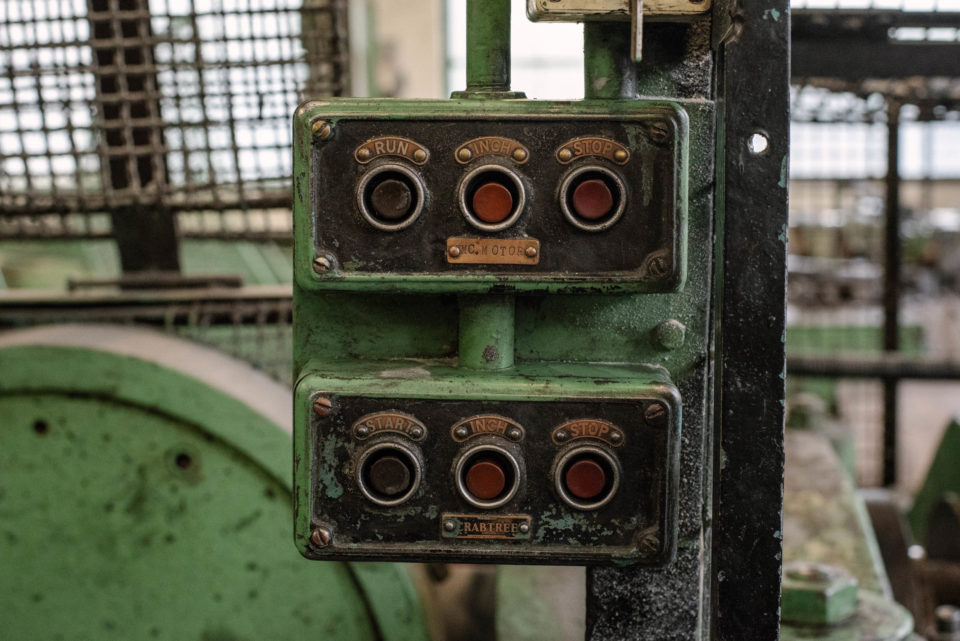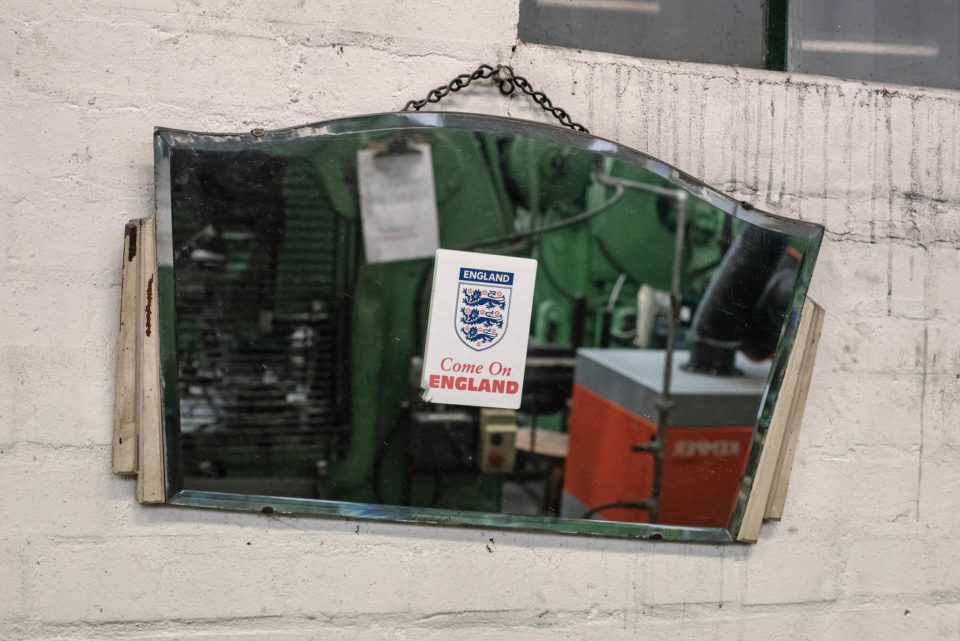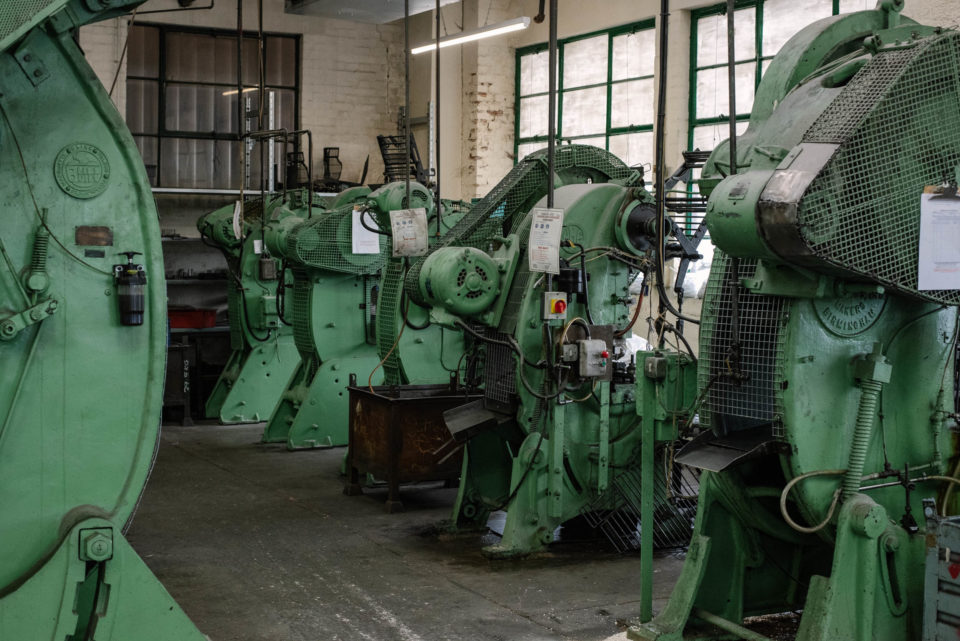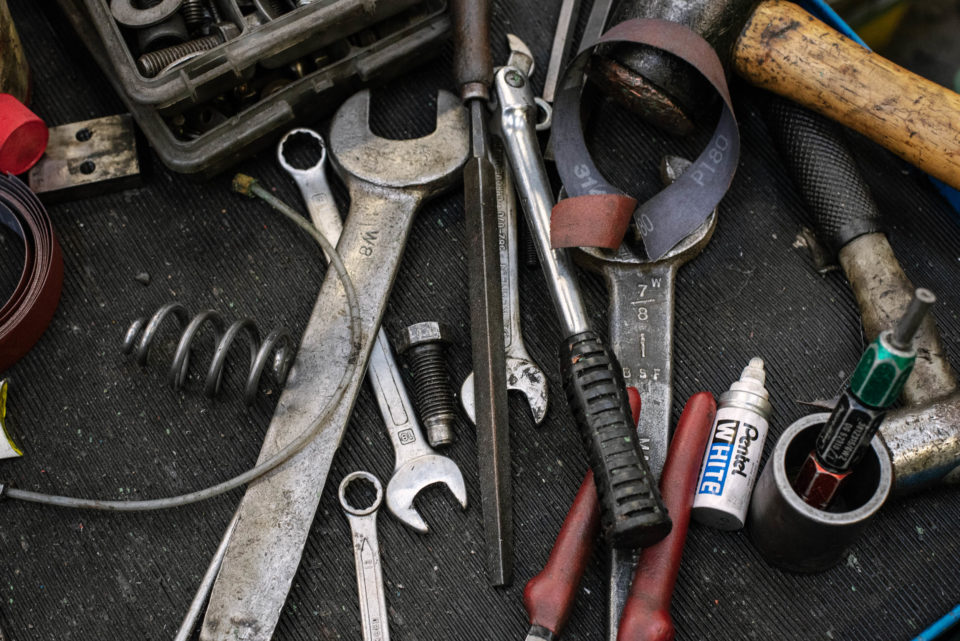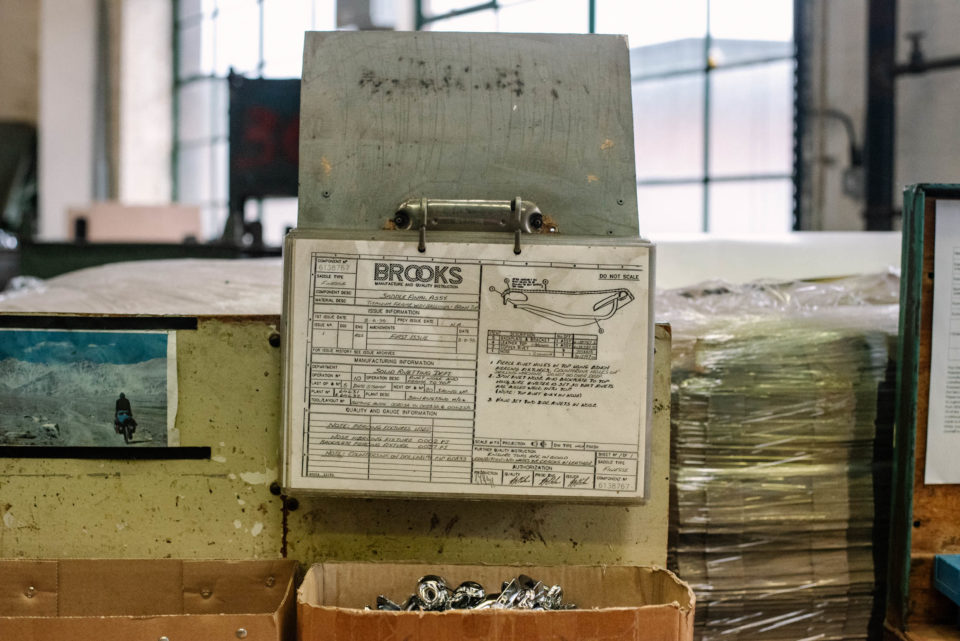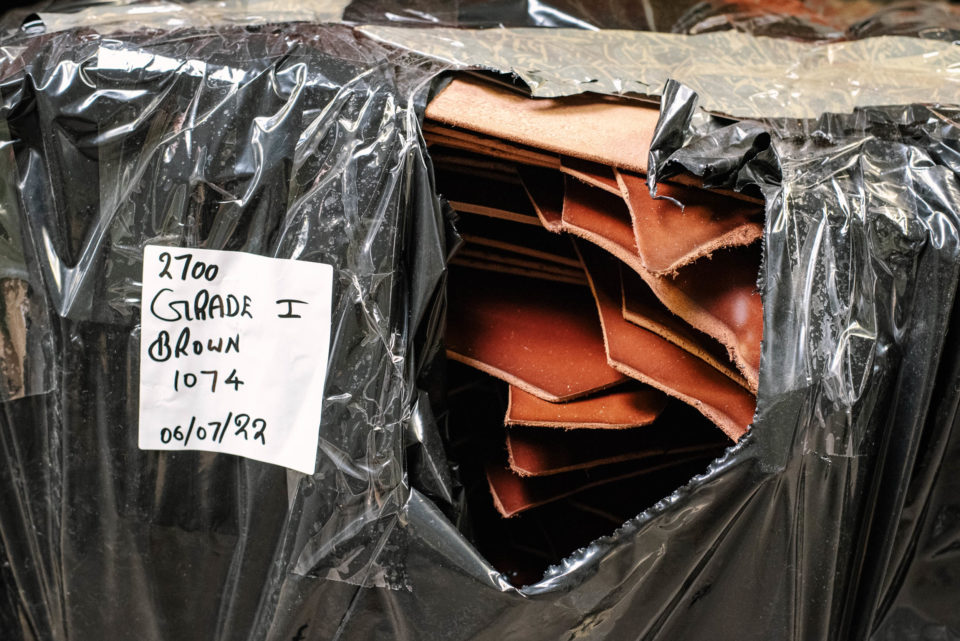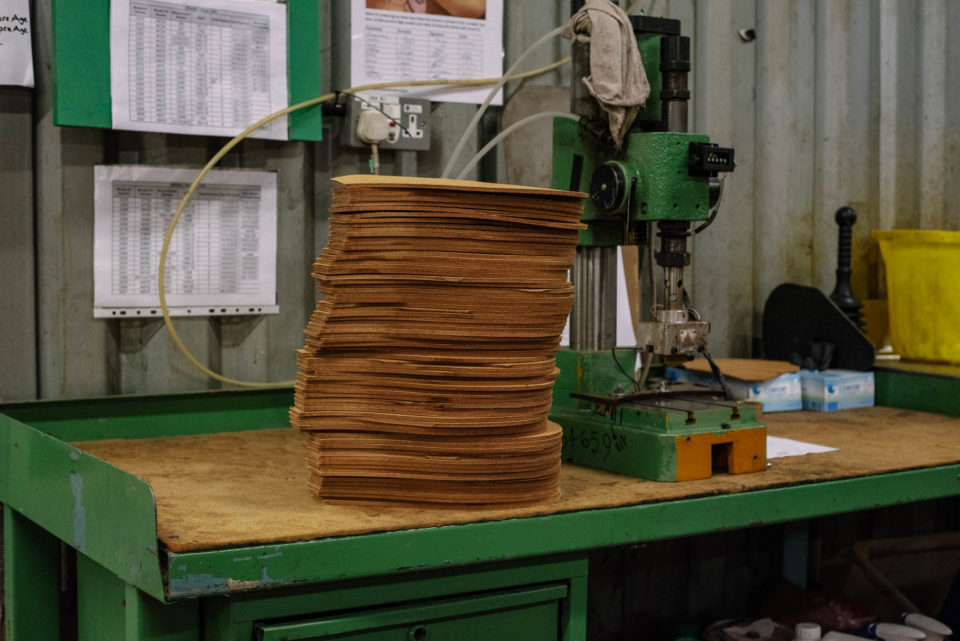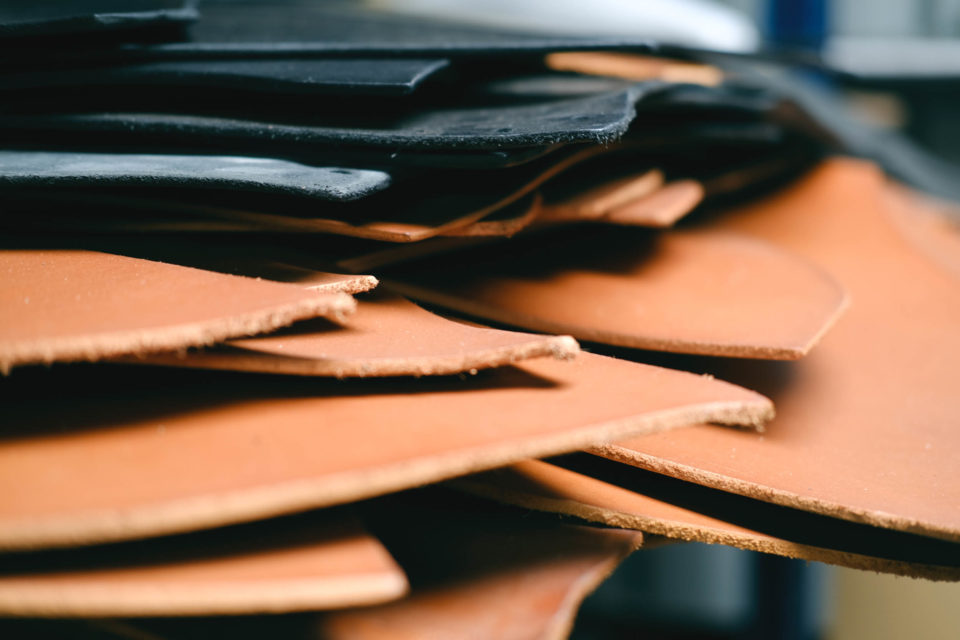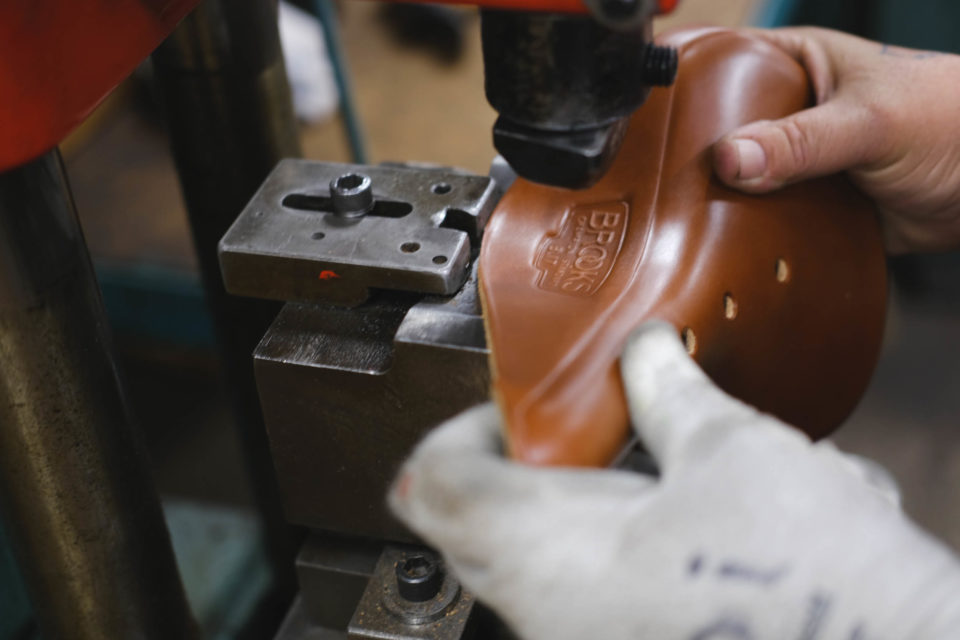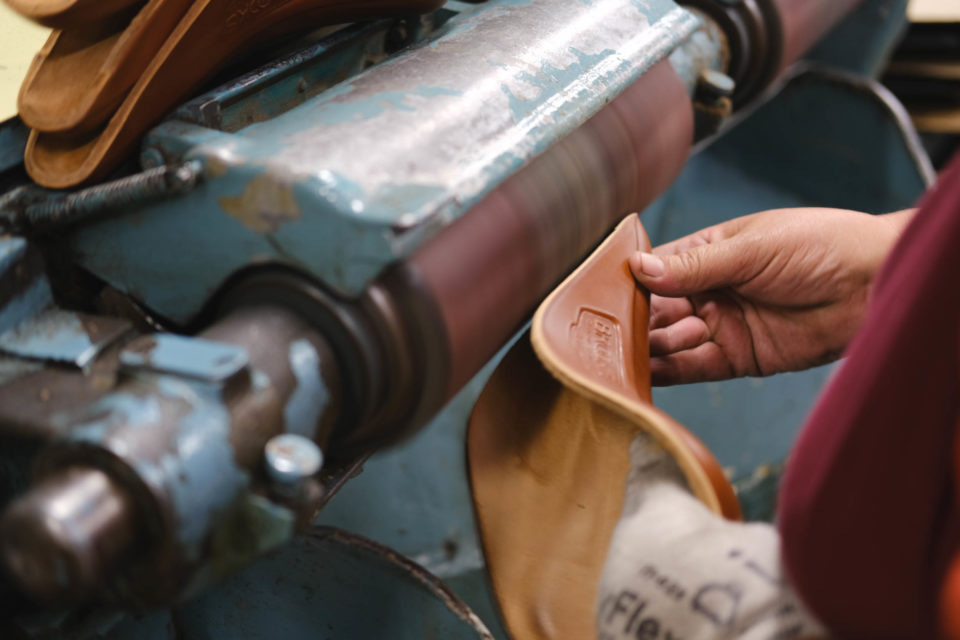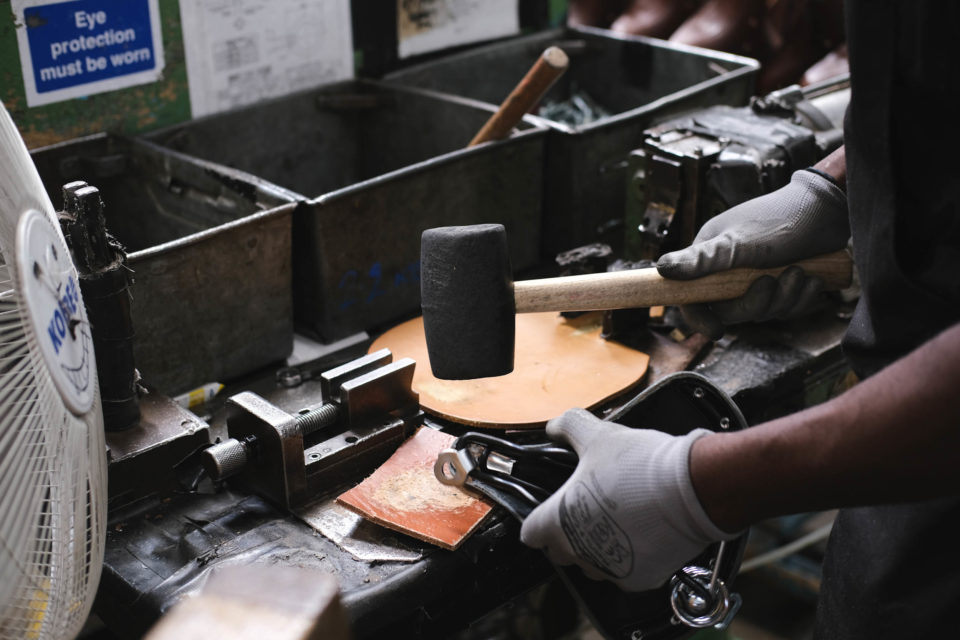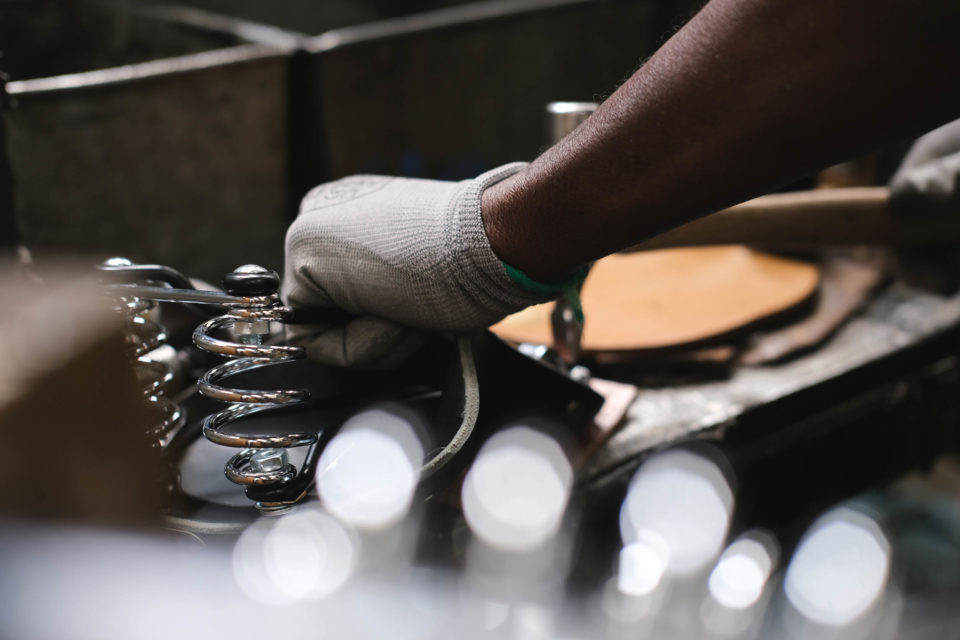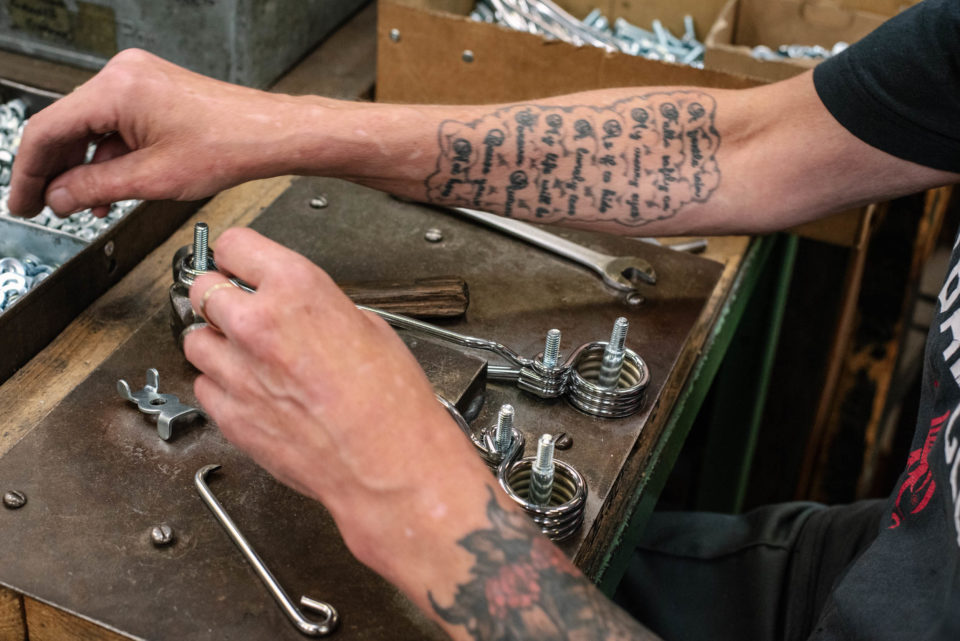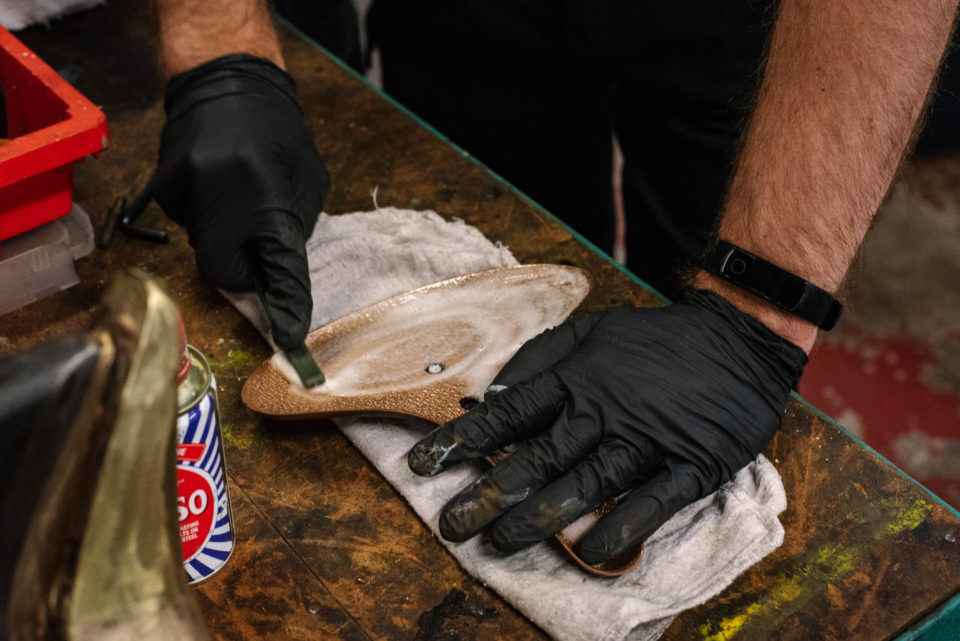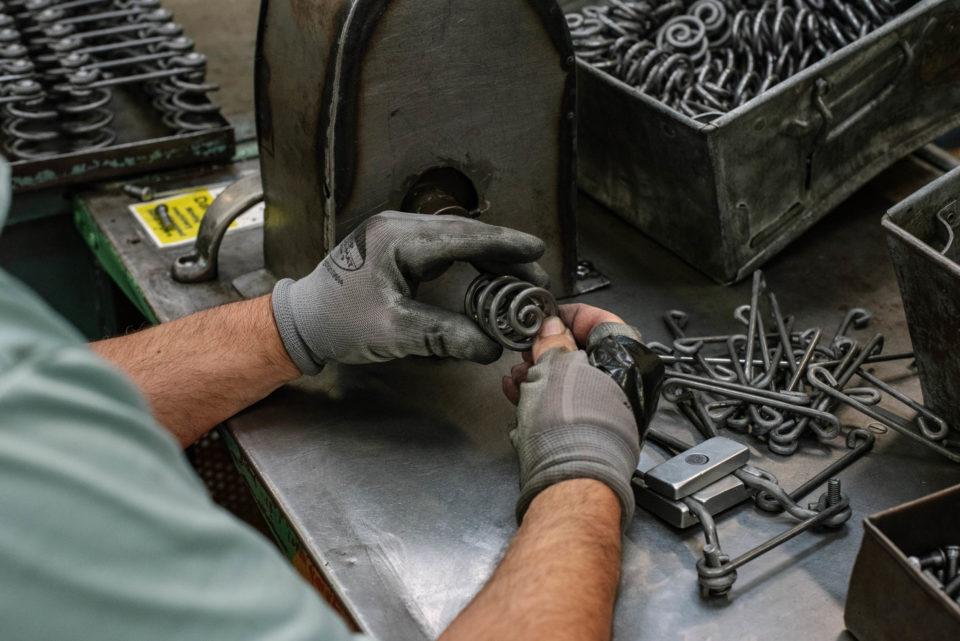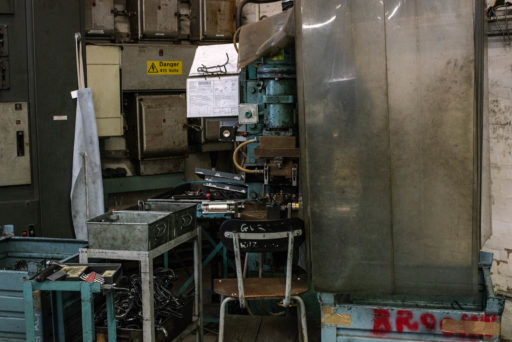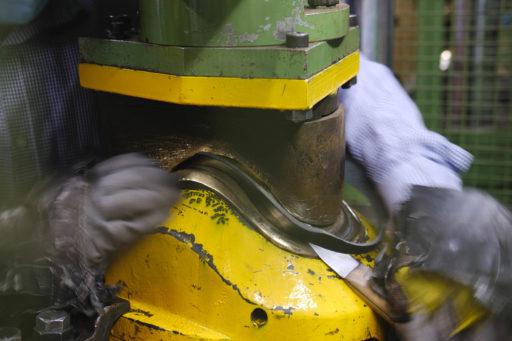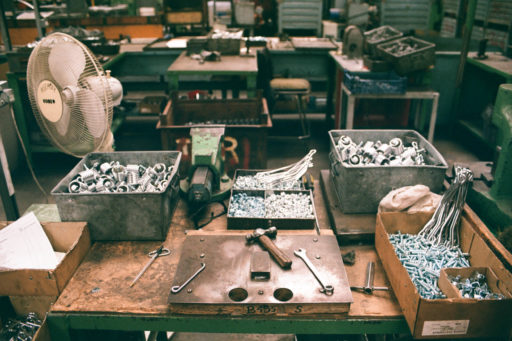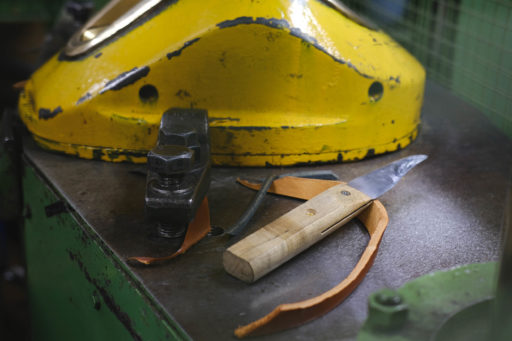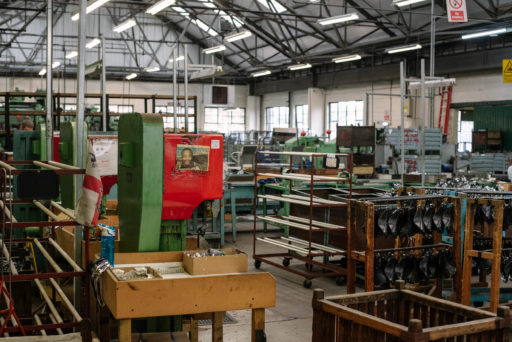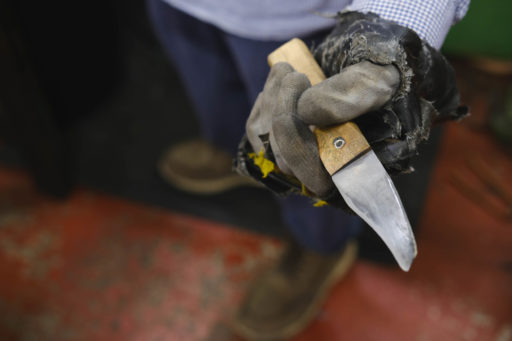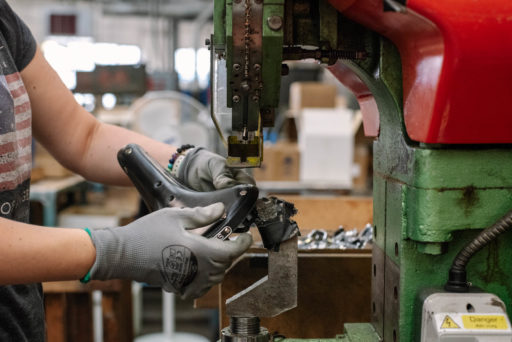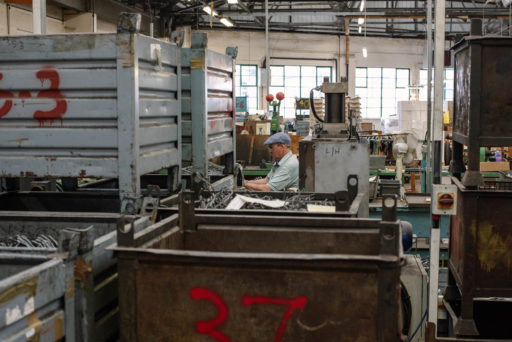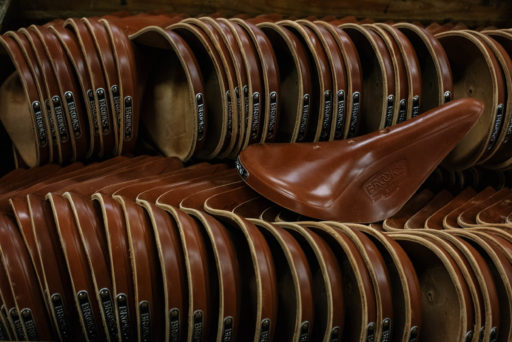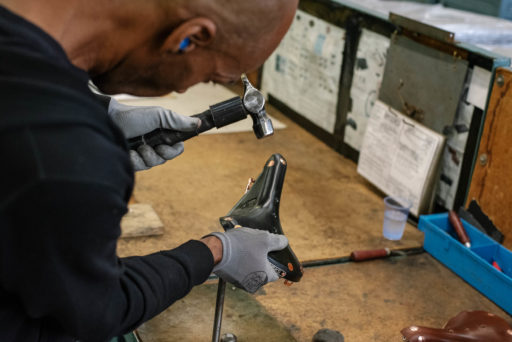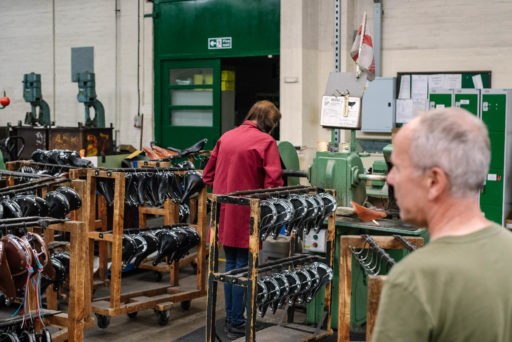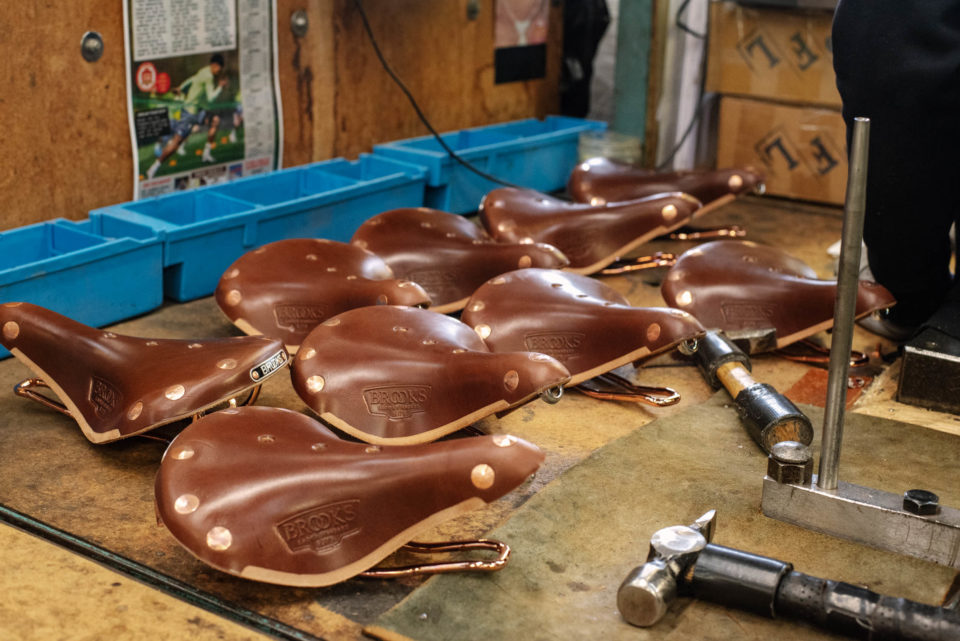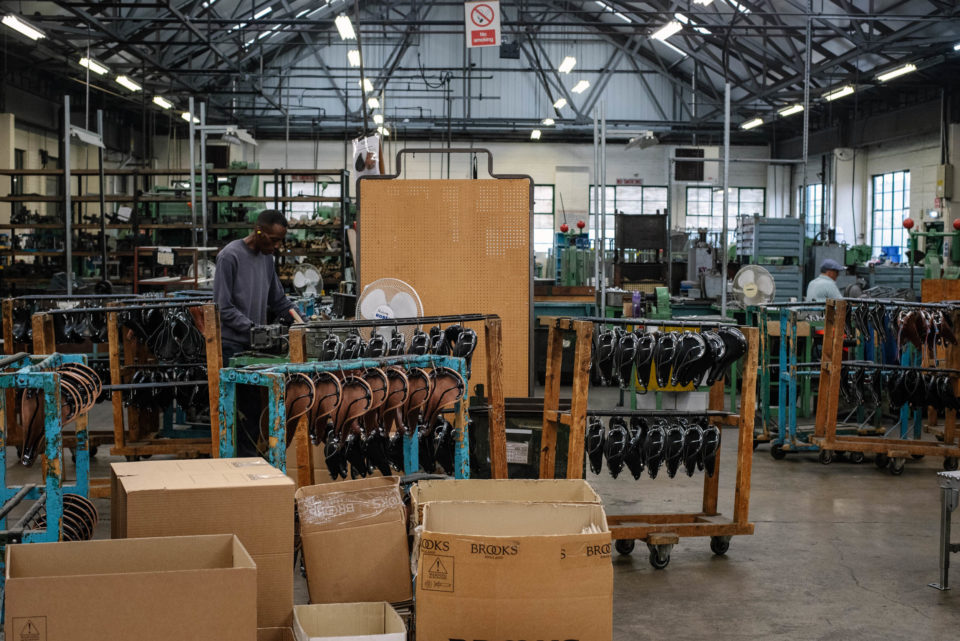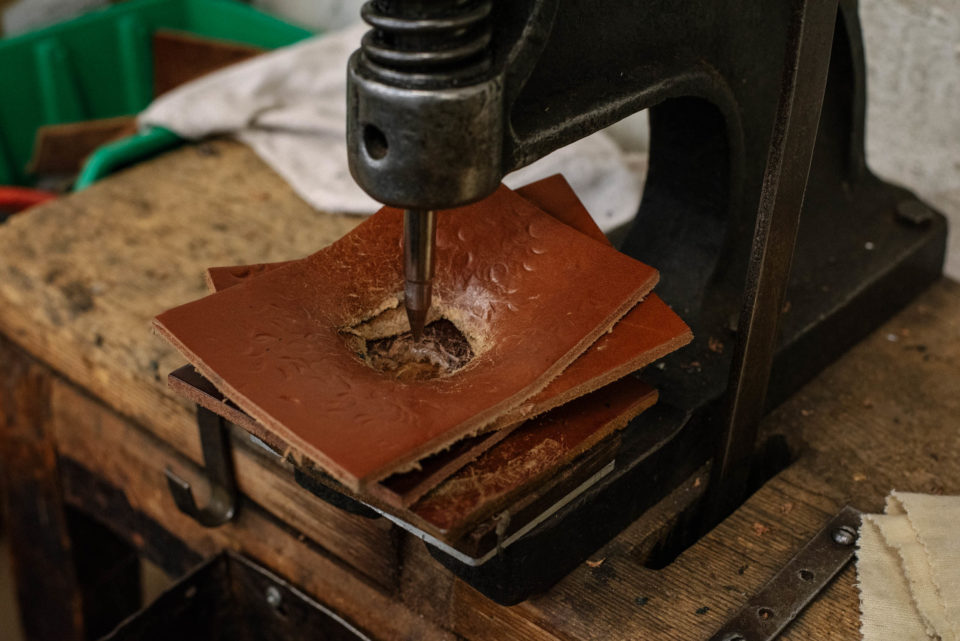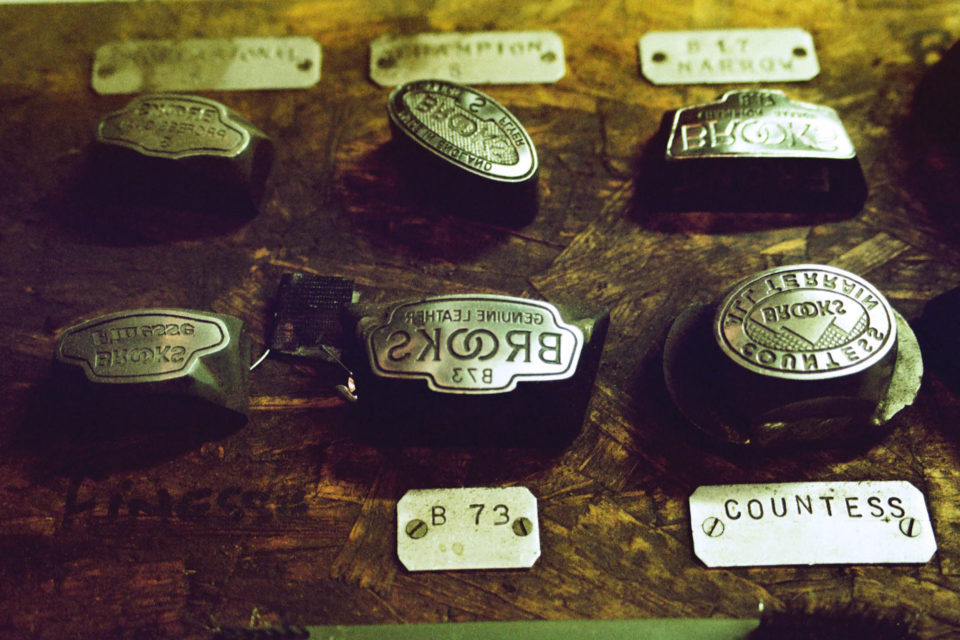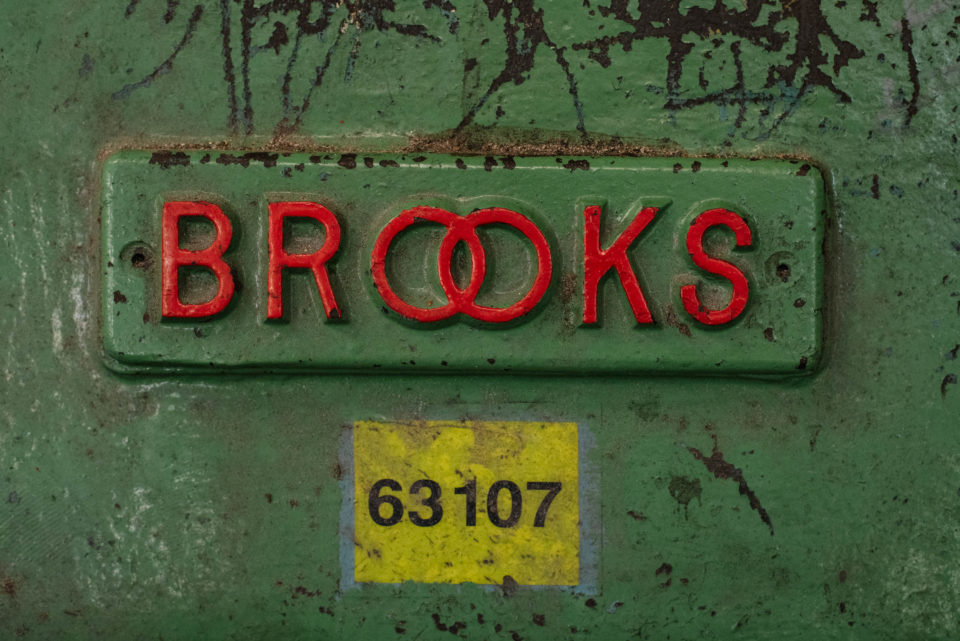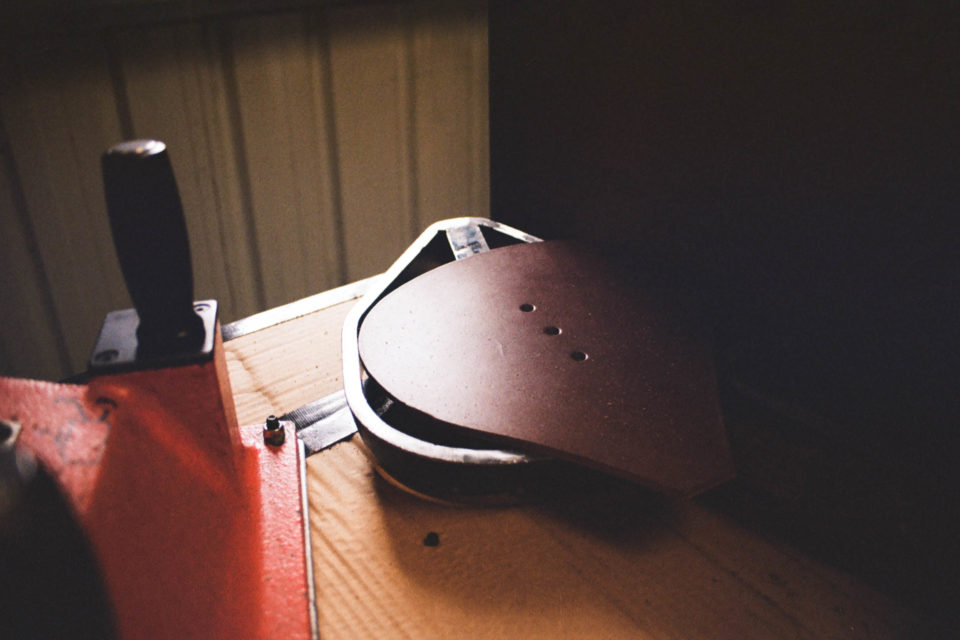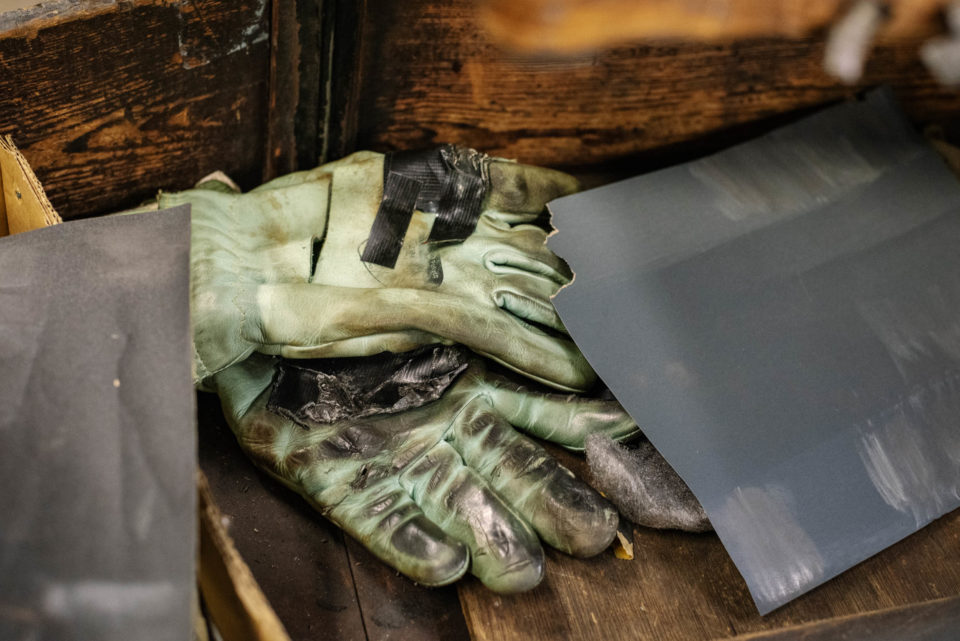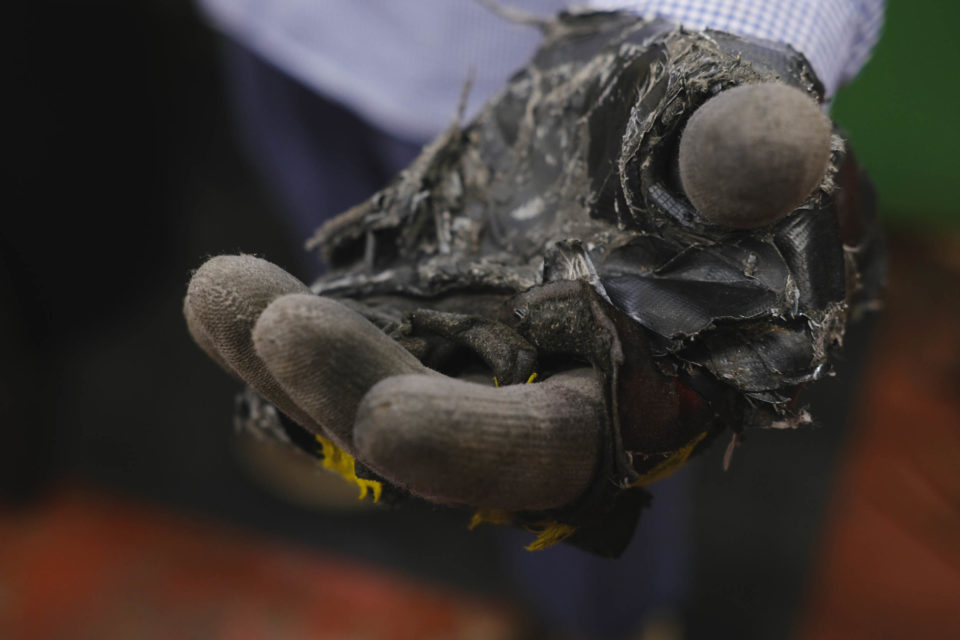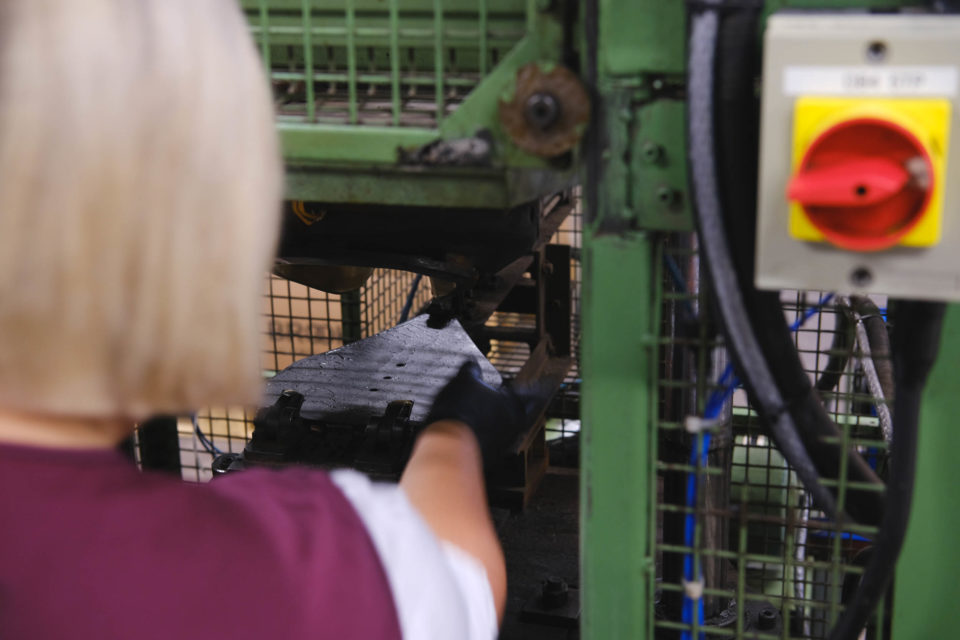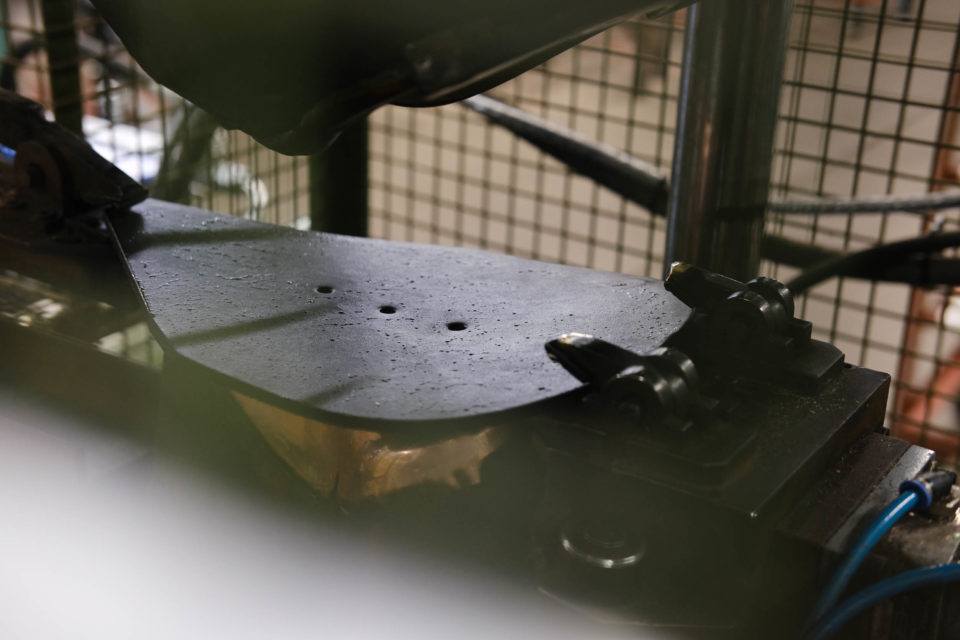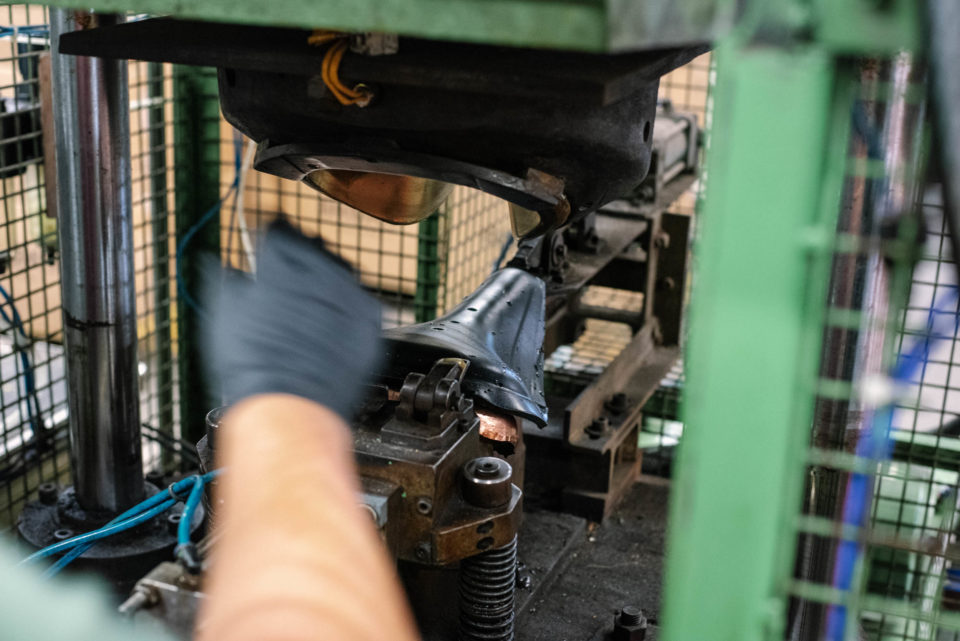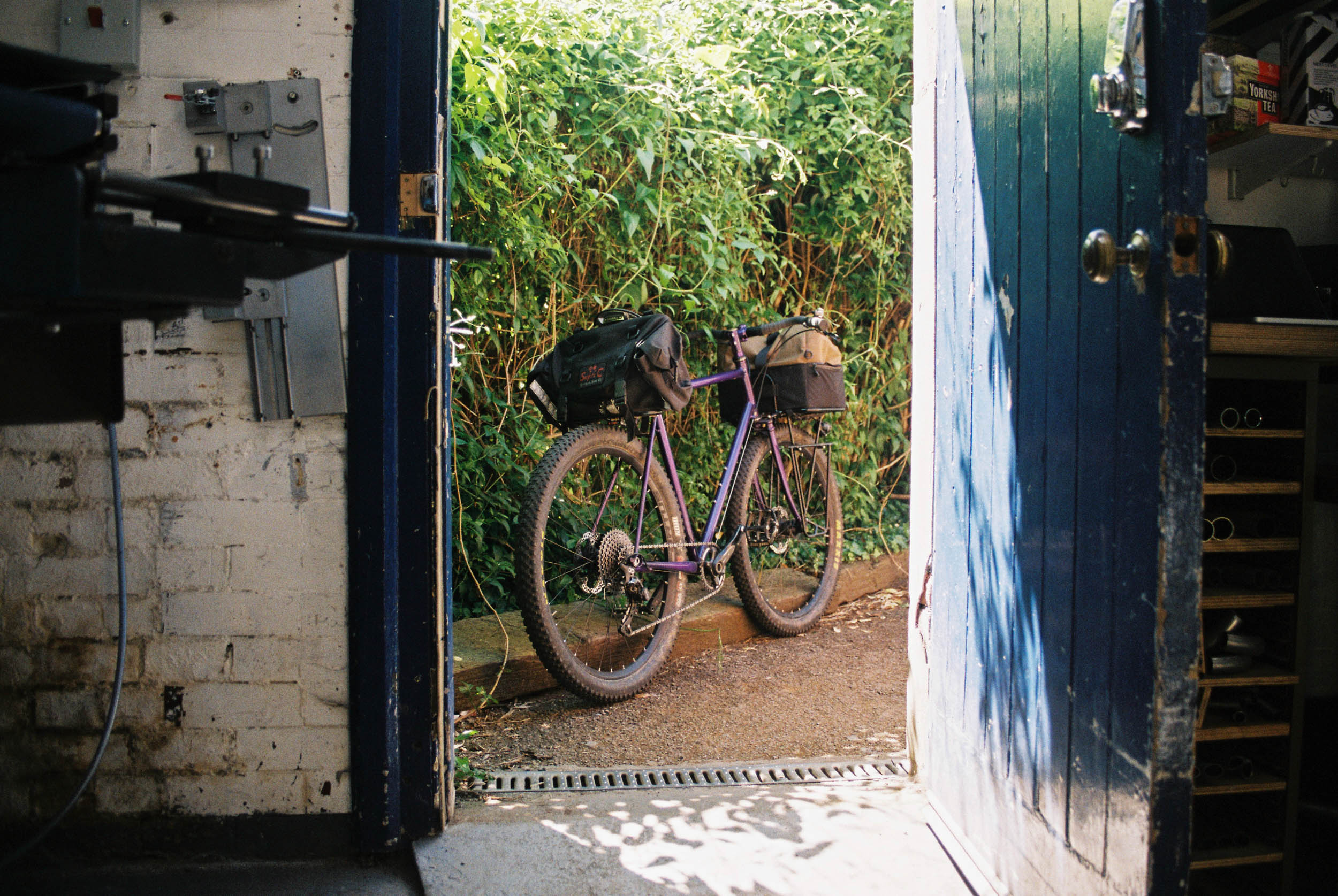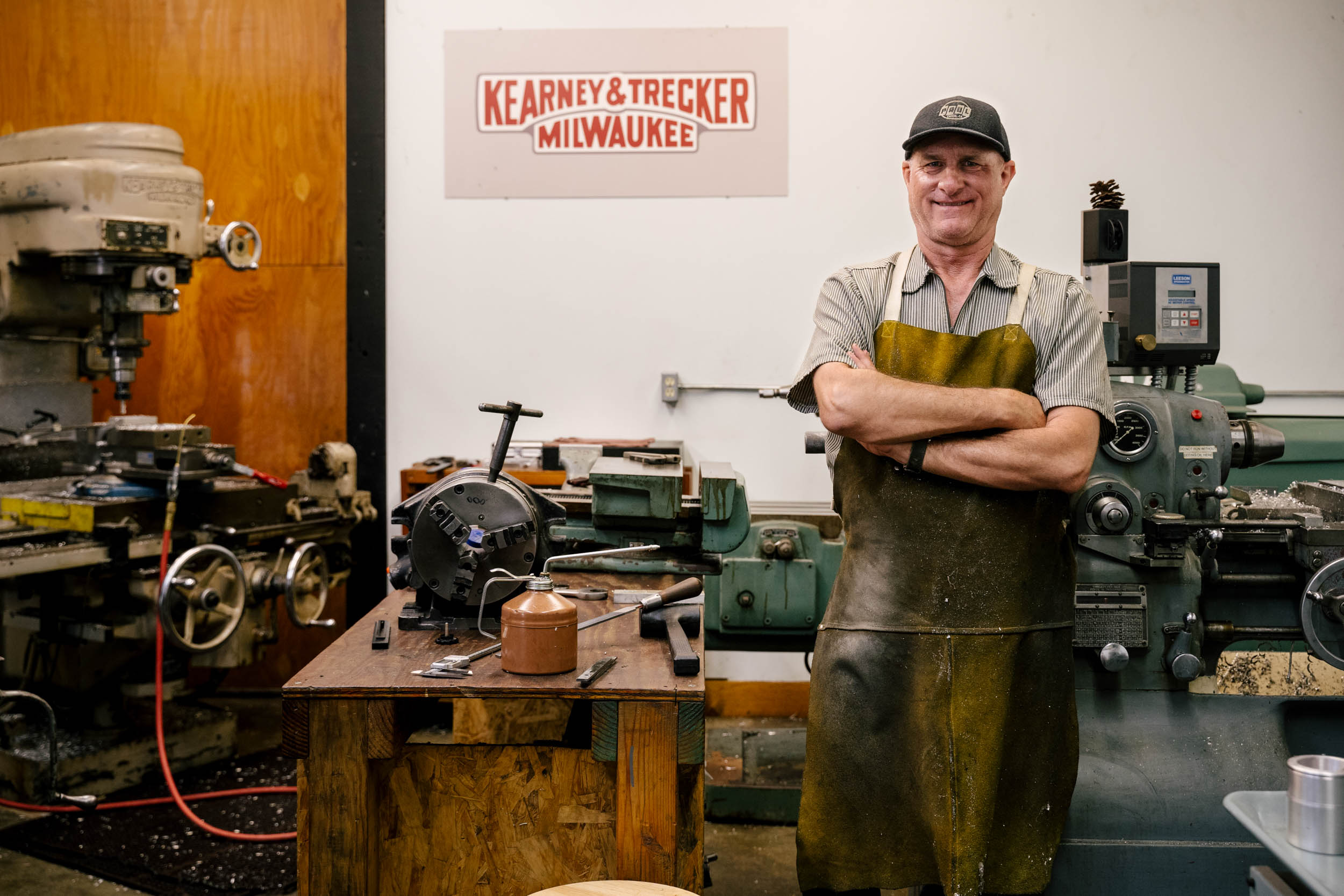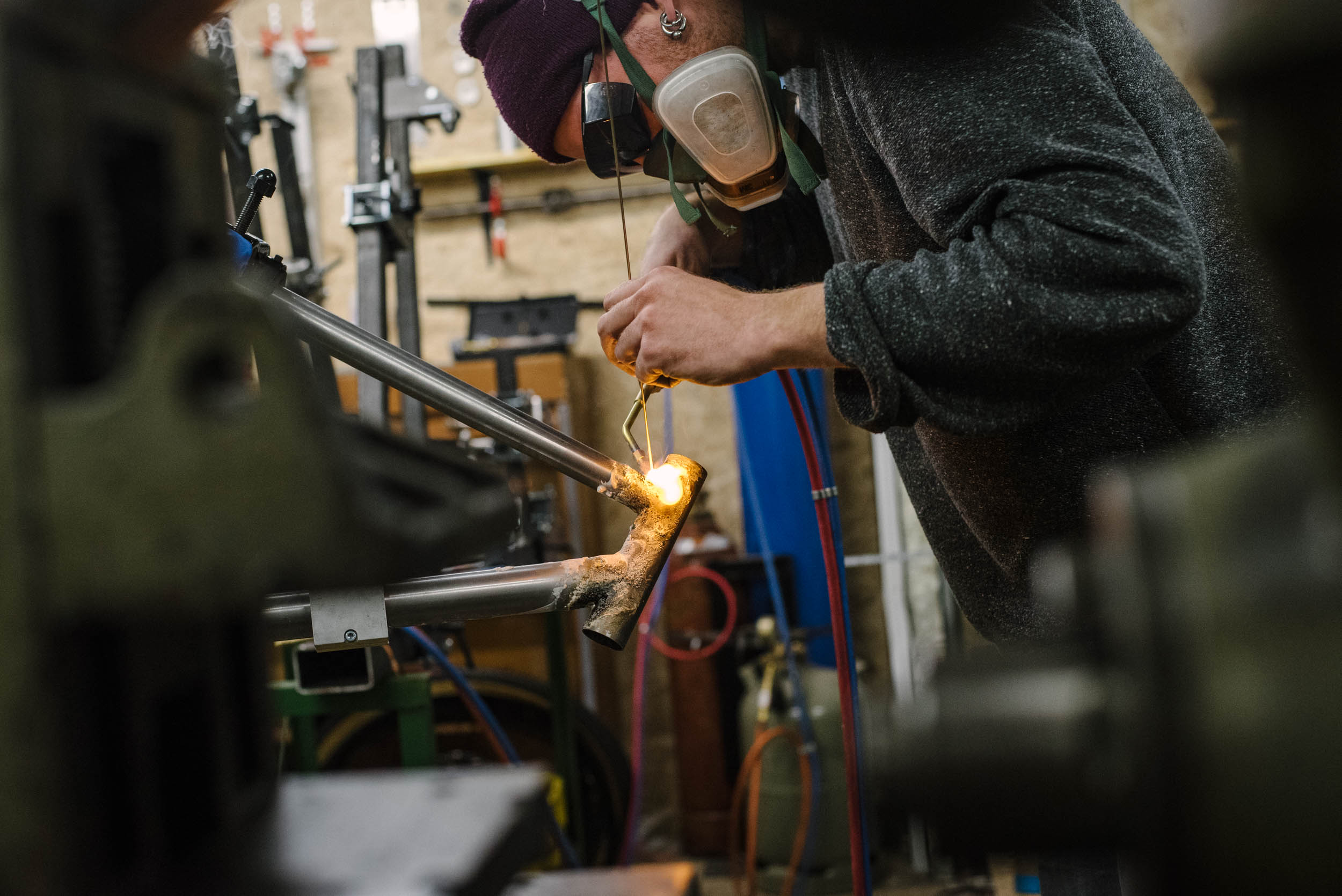Inside Brooks England: British Leather Saddles Since 1866
While touring around the United Kingdom this summer, Lucas stopped by the Brooks England factory near Birmingham to learn more about the heritage brand and the leather saddles they’ve been producing since the late 1800s. Take a deep dive into the company’s past and present and find a photographic feast for the eyes here, featuring additional images by Jack Boffy…
PUBLISHED Sep 13, 2022
Co-written and co-photographed by Jack Boffy (@jackboffy)
At the recommendation of far more well-traveled cyclists at the time, I’ve been riding a Brooks saddle since my very first loaded tour. Nearly all of my bikes sport a Brooks these days—whether Cambium or leather—and the company’s products are an inextricable part of my experiences on the bike. The Smethwick, UK-based maker needs little introduction, as they’re surely one of the most revered brands among traveling cyclists, and they’ve produced an almost unfathomable number of saddles in the 150+ years they’ve been in business.
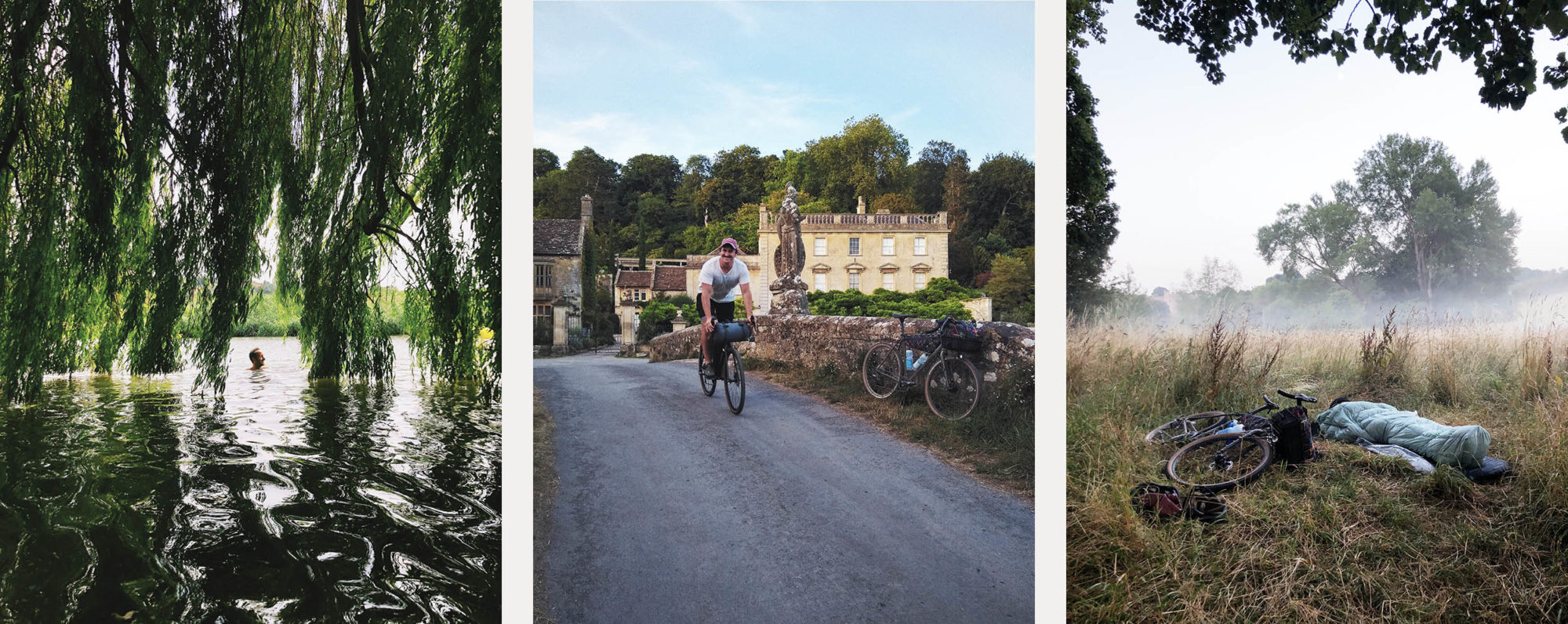
British photographer Jack Boffy was riding his bike from London to Hong Kong in 2018 (atop a Brooks B17 saddle), and our paths crossed when he stopped in Tbilisi, Georgia, where I was living at the time. He’d just finished our Caucasus Crossing route and needed a place to stay “for the night.” When Jack finally left my spare room three weeks later, bound for Azerbaijan, we said we’d see each other again for a trip someday.
That opportunity presented itself when I was passing through his hometown of Bristol, England, over the summer, and I invited him to join me on a tour of the Brooks factory after a couple of nights of camping. We closed the loop on our chance meeting in the Republic of Georgia when the team at Brooks fixed a couple of rivets and chamfered the edges of his well-worn old saddle during the visit, breathing new life into it for future trips.
You can read our post-visit interview with our tour guides Jim Holland and Steve Green below, who have a combined 55 years of experience with the company. You’ll also find an extensive photo tour of what I hope you’ll agree is an endlessly fascinating workspace that’s rich in detail and where old machines and time-tested techniques combine to create new saddles built to carry riders around the world. If you ride a Brooks leather saddle, it was made here by the hands of the people we met at the factory in Smethwick.
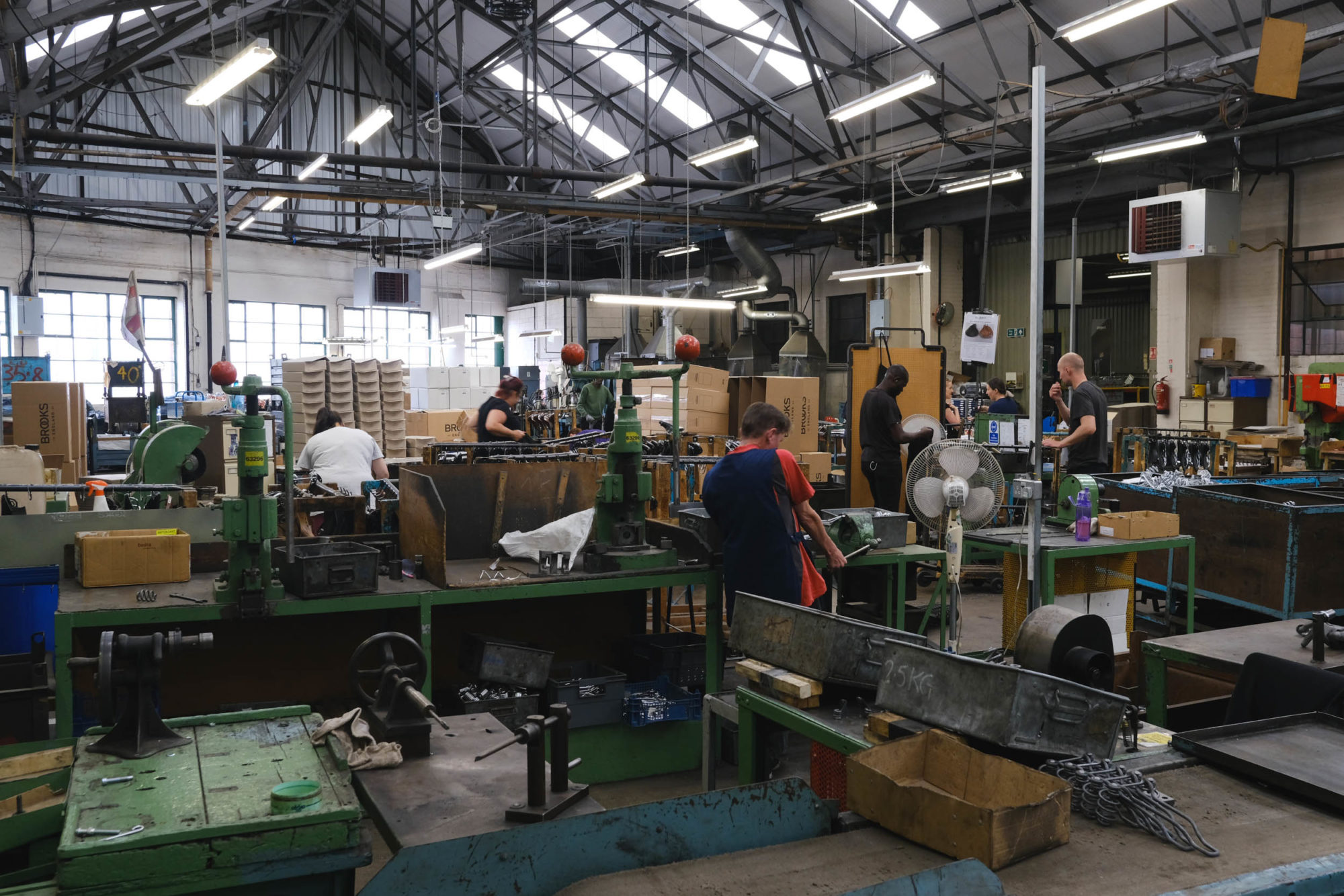
To begin, please introduce yourself and your work at Brooks.
Steve: I started with Brooks nearly 45 years ago as a trainee accountant. I’ve been here in various roles all my career. Currently, I’m the UK sales manager. My father also worked here, so I’m second-generation Brooks, as it were.
Jim: I grew up not far from the factory. The bike was my passport to greenery and escape out of the industrial landscapes of the West Midlands. I started at Brooks 10 years ago as a graphic designer, and I crossed over into a marketing role last year.
Brooks has a storied history in the world of cycling. Can you tell us when and how it came to be?
Jim: The company was officially registered in 1866 here in Birmingham. John Boultbee Brooks, the founder, was a horse-saddler. The story goes that his horse died, and he had to ride a bicycle to his workshop. He enjoyed the bicycle but couldn’t stand the wooden saddle, which led him to invent the leather bicycle saddle and found the company.
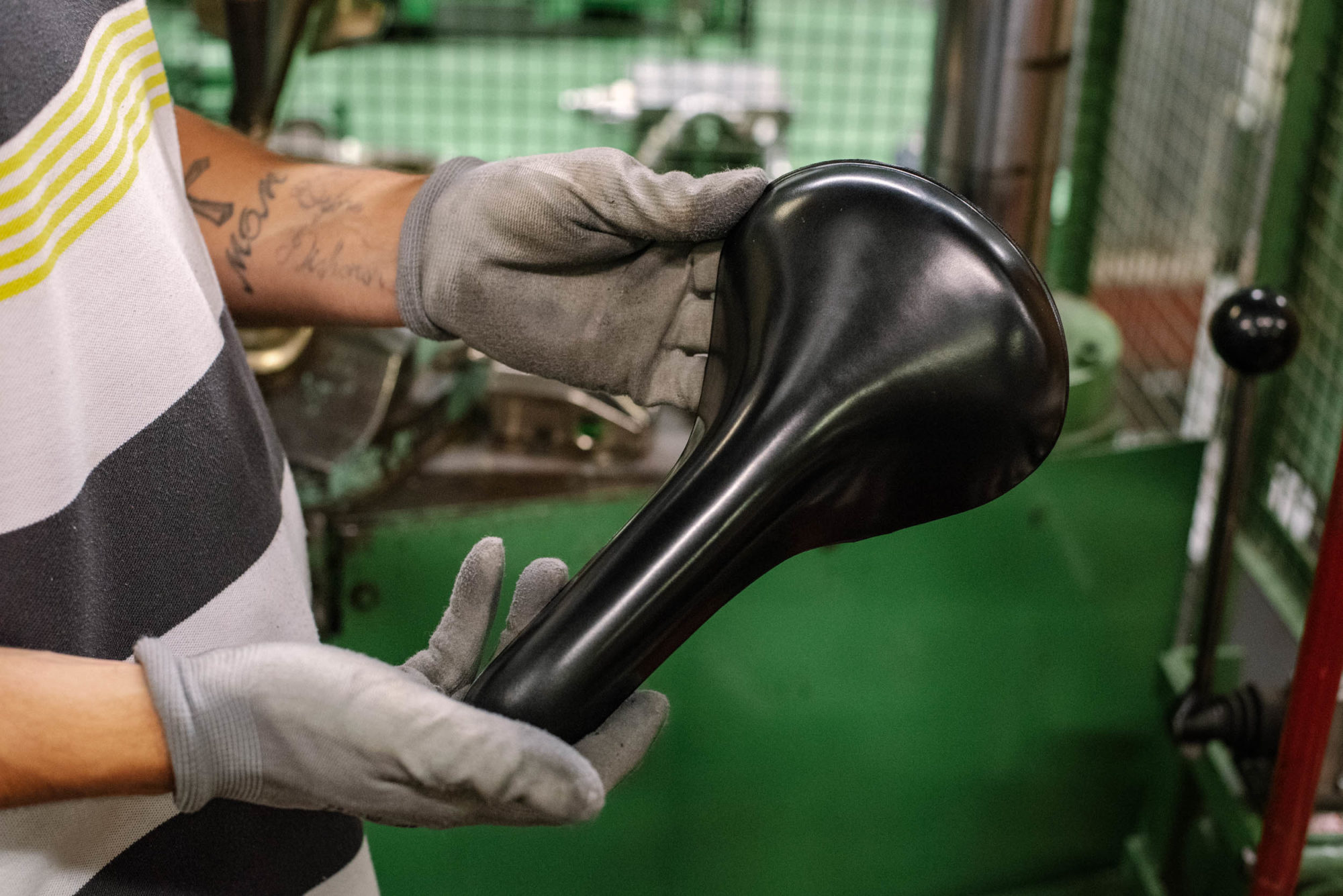
Roughly how many leather saddles does Brooks produce each year, and how has that number changed over time?
Steve: It’s around 200,000 a year at the moment. Demand has been exceptionally high the last couple of years, so we have been producing as much as possible. Each step of the process is done by hand, even where machines are used. They are manually operated; there’s no automation. Similarly, each step takes a lot of care and attention, so even when we are focused on volume, the production can’t be rushed.
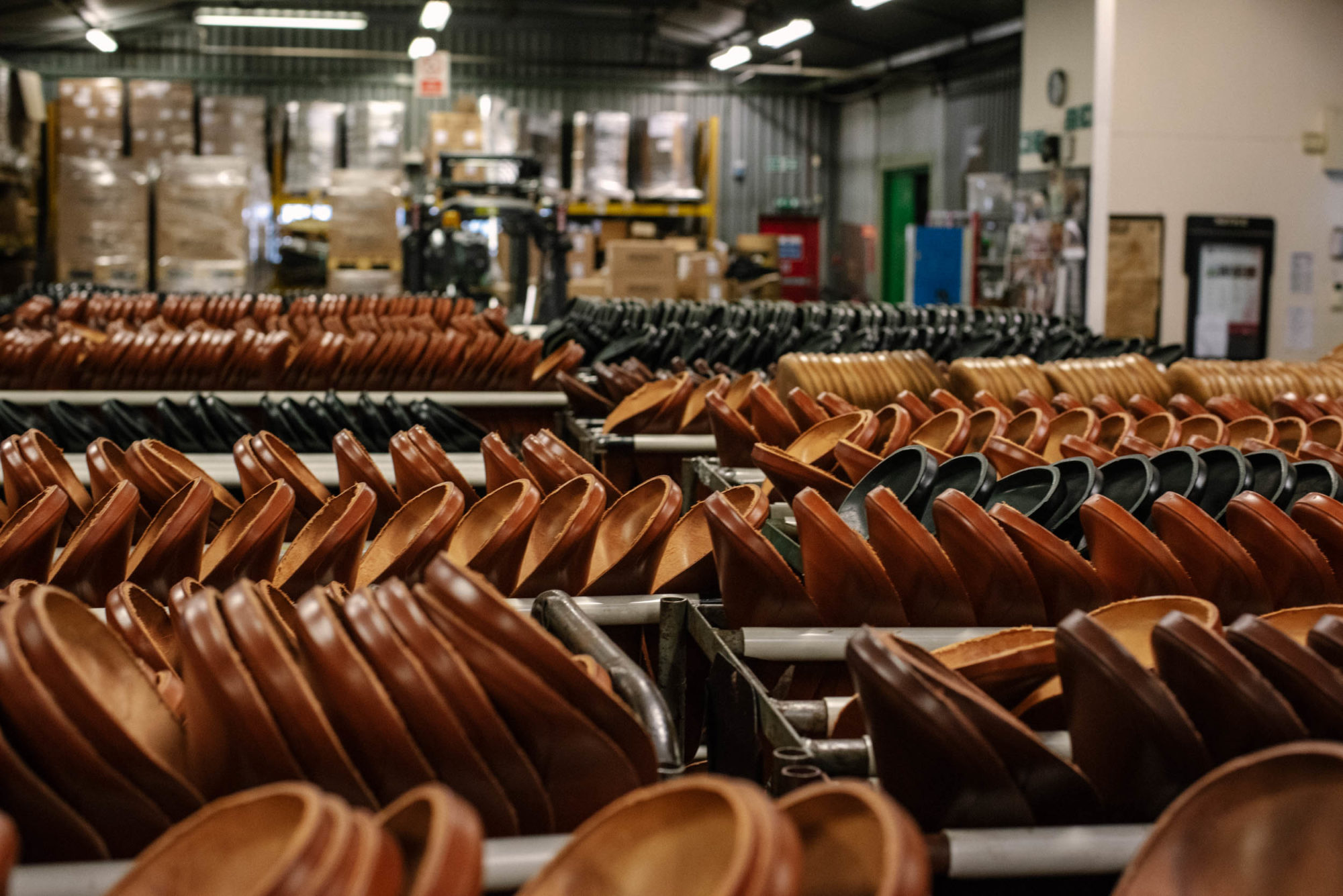
How do today’s saddles differ from those that were first coming out of the factory in the late 1800s?
Jim: The finished saddles, we believe, would be very similar. The quality of our materials and our dedication to the process have not changed. That’s the incredible thing about it: we’re still making the same products we were making 150 years ago, and they’re still relevant today.
On that note, what’s the oldest model in the line-up that’s been produced continuously? Why do you think that one is still around today?
Jim: The B17. It’s also probably the least changed and still our best seller. It’s perhaps the most versatile and most famous model as it works well for almost all types of riding. There are a lot of faithful customers on that model.
Tell us a little about the folks who work at the factory in Smethwick. How many employees are there, and what kinds of roles are they in?
Steve: We have 30 permanent employees on staff. We have some very unique and specialized operations here to build the saddle up; most workers are trained to cover several jobs, and some may switch jobs several times during the day/week.
Jim: Everybody lives quite close by. It’s a very traditional factory model in a lot of respects. The atmosphere is kind of different; the staff take a lot of pride in what they are making. There’s not so many places like this left in the UK, so we all know we’re part of something that has a long history and is somewhat unique.
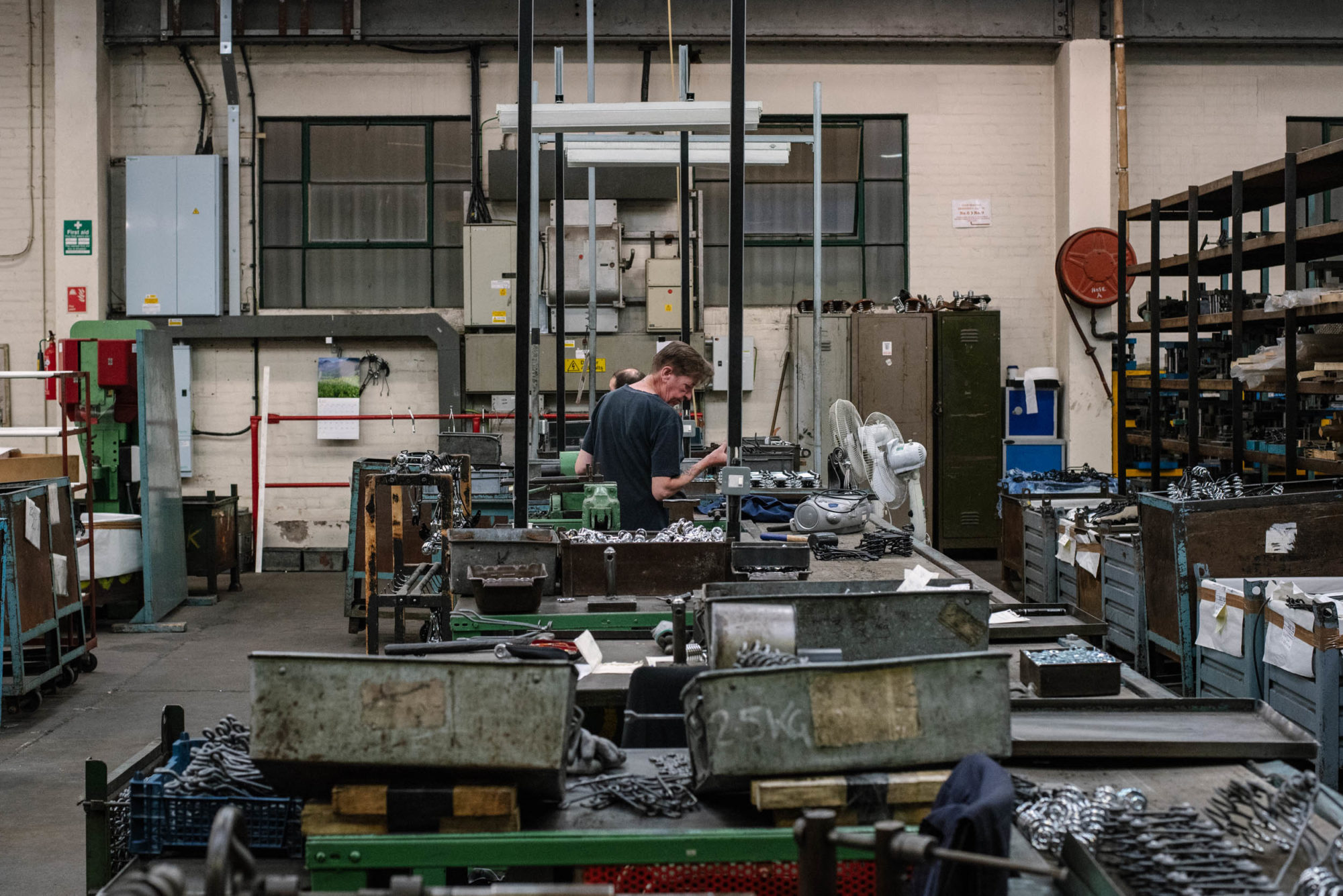
As you mentioned, many of the roles in the factory are very specialized. Do you have to do a lot of in-house training since the skills required are quite specific?
Jim: The skills are learned over time, passed on directly by the staff. The process has very specific skill sets, but someone who had worked elsewhere in the leather or metal industries might recognise some of the steps involved. Some roles, like the hand leather finishing, are only done by our more experienced staff. We also have people that are specialised in one press or another. They’ll usually be faster on that machine than anyone else.
Many of the processes that go into making your saddles are done, in part, by hand. Is this because it’s the most practical way of getting the job done, or is making them with traditional methods an unwavering part of the Brooks ethos?
Jim: Brooks saddles perhaps could not be made another way. It’s not something we can automate. Every step requires the particular skill and attention of the particular person that is doing it. The tradition is part of the handmade product.
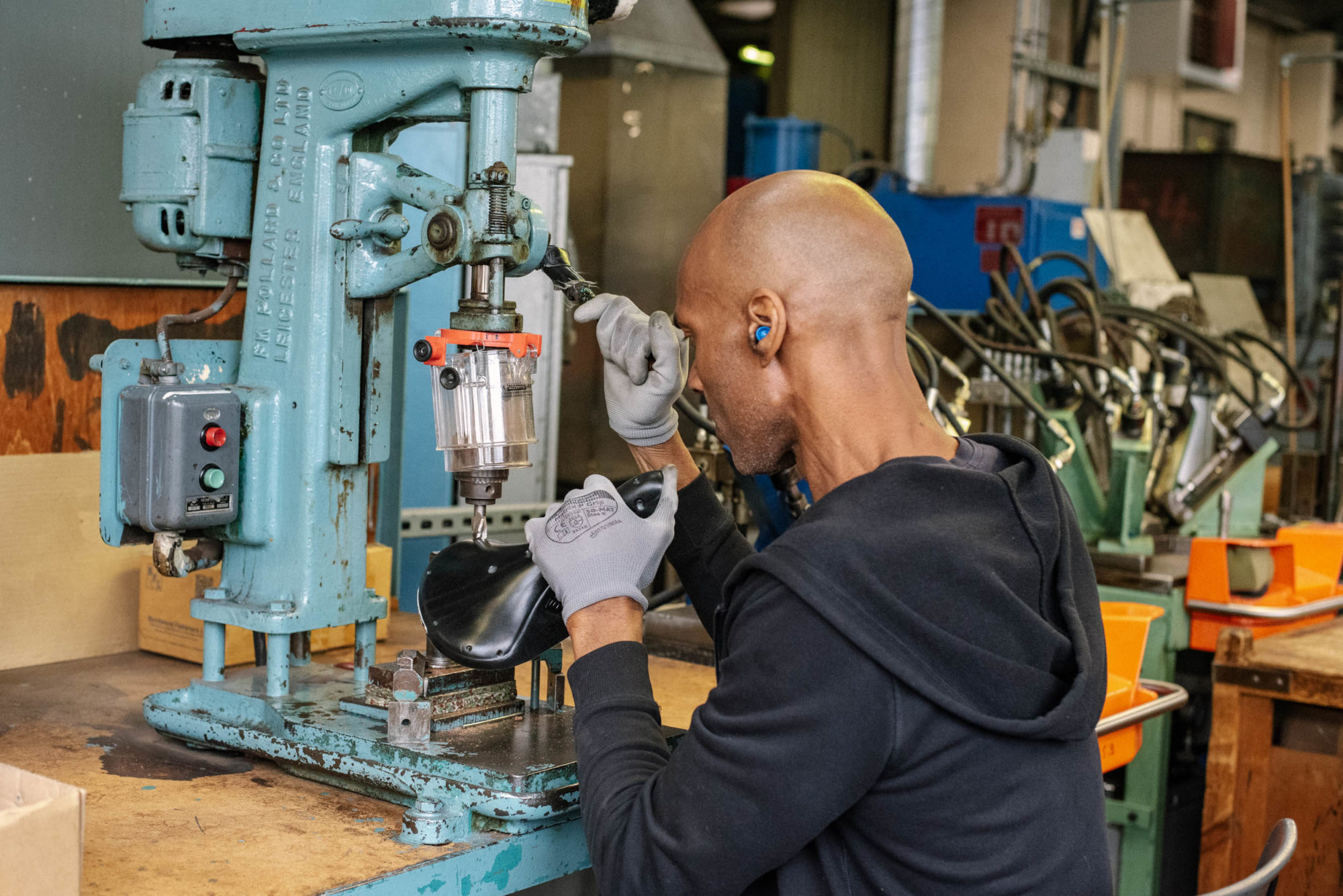
Some of the machines that make the hardware for your saddles have some years under their belt! If one malfunctions, are you able to source replacements, or is it a case of just having to fix them in-house?
Steve: Indeed, some of the manufacturers of the older machines no longer exist as a business. Luckily, there are still several small but good local toolmaking/engineering workshops that can replicate the tools we need for our machines, even when we present them with a “dog-eared” or broken part to work from.
Jim: It’s far more sustainable for us to service and maintain the machinery that we already have. We’ve operated on that model for around 60 years, and some of the machines are older than that.
Back to the saddles themselves, why use leather? Does it still make sense today, given all the more technically advanced materials available?
Jim: We’ve always looked for other materials. There were trials and patents for rubber-topped saddles in the early 1900s. But, for the most part, leather is still just the best material for the design. We haven’t found anything else that would give the same performance. Of course, we have the Cambium now, and there are similarities, though many customers have stayed on leather. The way it moves with and shapes to the cyclist is unique, and breathability is important to many long distance riders too.
It still makes sense as we’re able to have a relatively simple structure with just three elements: leather, rails, and rivets. This also means each element can be individually repaired if needed. Most other saddles on the market are basically disposable if they break.
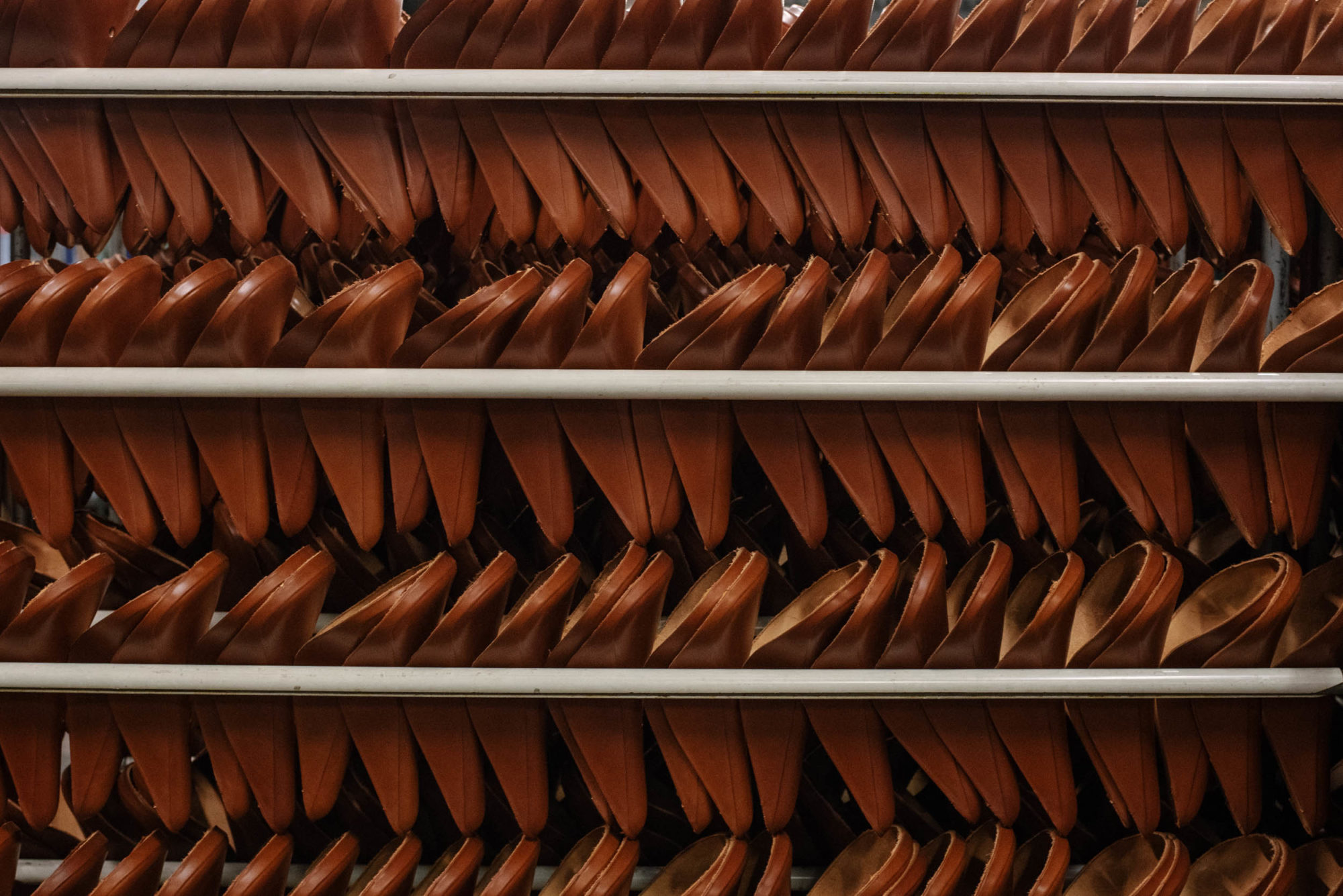
From where do you source your saddle leather?
Steve: All the leather we use is a by-product of the food/meat industry. The leather is prepared and tanned/dyed for us in Belgium using hides from UK or Irish cows. The “harsher” climate helps to produce the firmness and strength needed for a durable cycle saddle. The leather is vegetable tanned, in the traditional way, which is more suited to thicker leather, and it ages better than chrome-tanned leather.
Jim: As Steve mentioned, it all comes from northern herds because of the thickness of leather required. Warmer climates produce lighter leather. We have even used some Scandinavian leather, but that can be too tough!
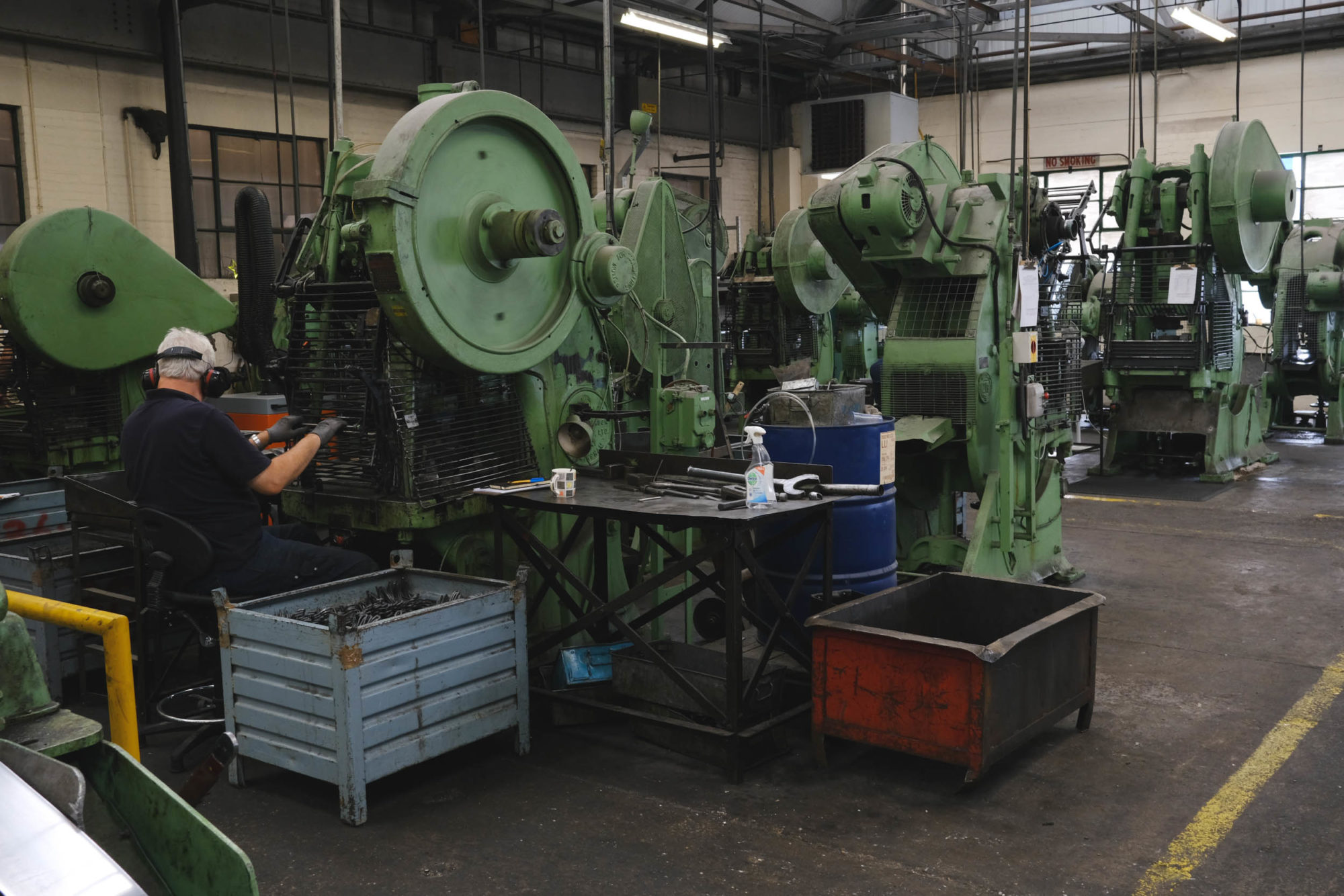
On average, how long does it take from someone cutting the leather to the finished saddle being in the box and ready to ride? How many people will touch it before it goes out of the factory door?
Steve: Each new batch of leather can behave differently from the previous one and may need more or less time to move through the processes. It’s a natural product that’s affected by all kinds of things such as air temperature, humidity, and storage. We soak the leather to shape it and then, later, dry it again to keep the shape. We often dry the leather outside on warm sunny days!
As a rough average, though, I would say 10 hours (just more than one working day of 8.5 hours for us) in real-time, but this includes at least four hours of labour inactivity (waiting time) whilst the leather is being soaked and then dried. Even on the simplest model, there is typically a contribution in the process from 16 workers; this could increase to 20 on a more complex build.
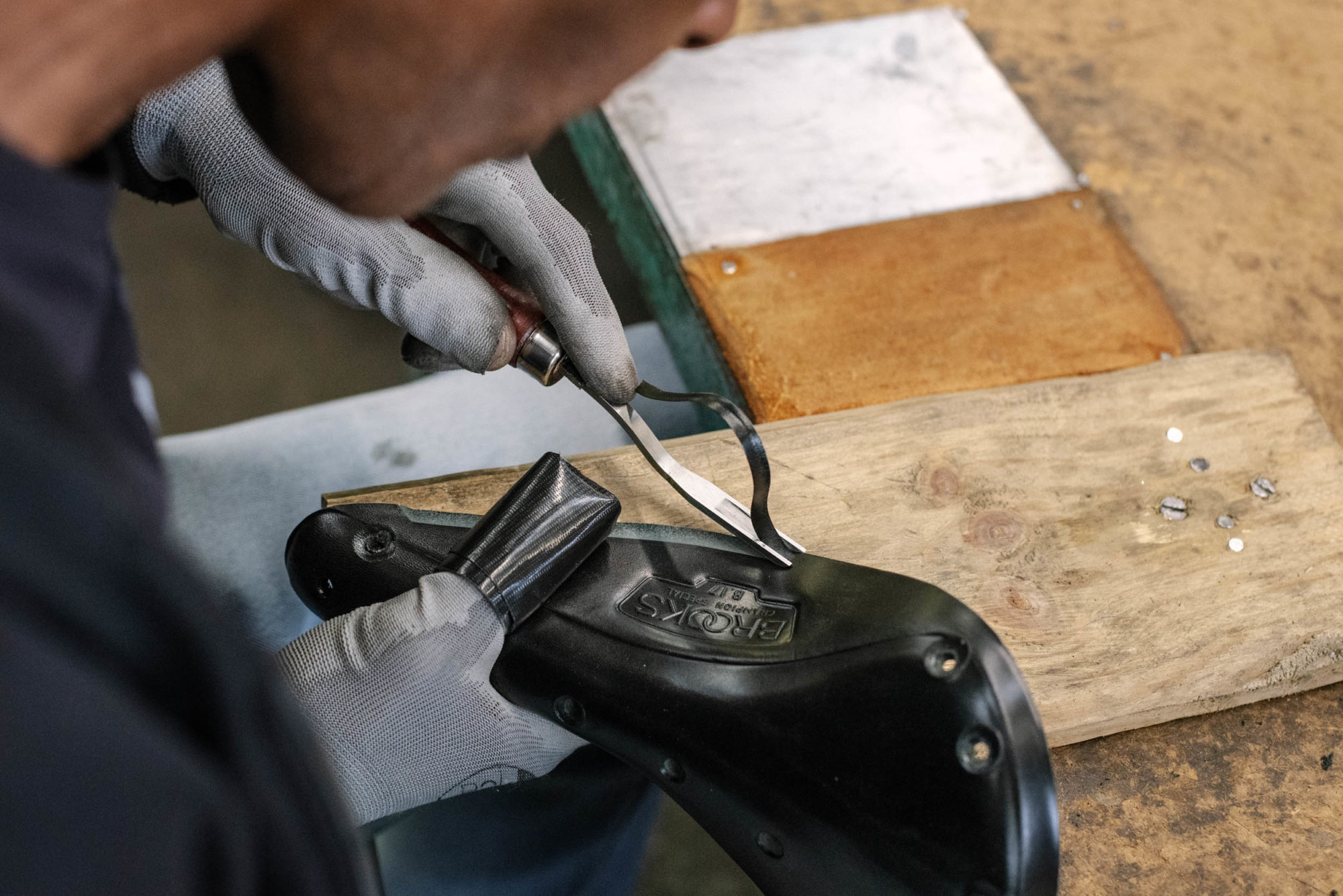
What’s the most difficult and time-consuming saddle to make, and why?
Steve: I would look immediately at our B33 and B135 as being the most time-consuming saddles simply because of the high number of constituent components needed to make them up and the increased potential possibility of having to stop and wait for any particular missing piece.
Saddles that have hand-hammered copper rivets take longer and are more demanding in terms of the skills and training required. We can easily rivet more than 15 tubular rivet saddles in the same time it takes to rivet just one with copper rivets. The B15 Swallow model should also be mentioned; it has several additional and unique production operations, which extends its production time.
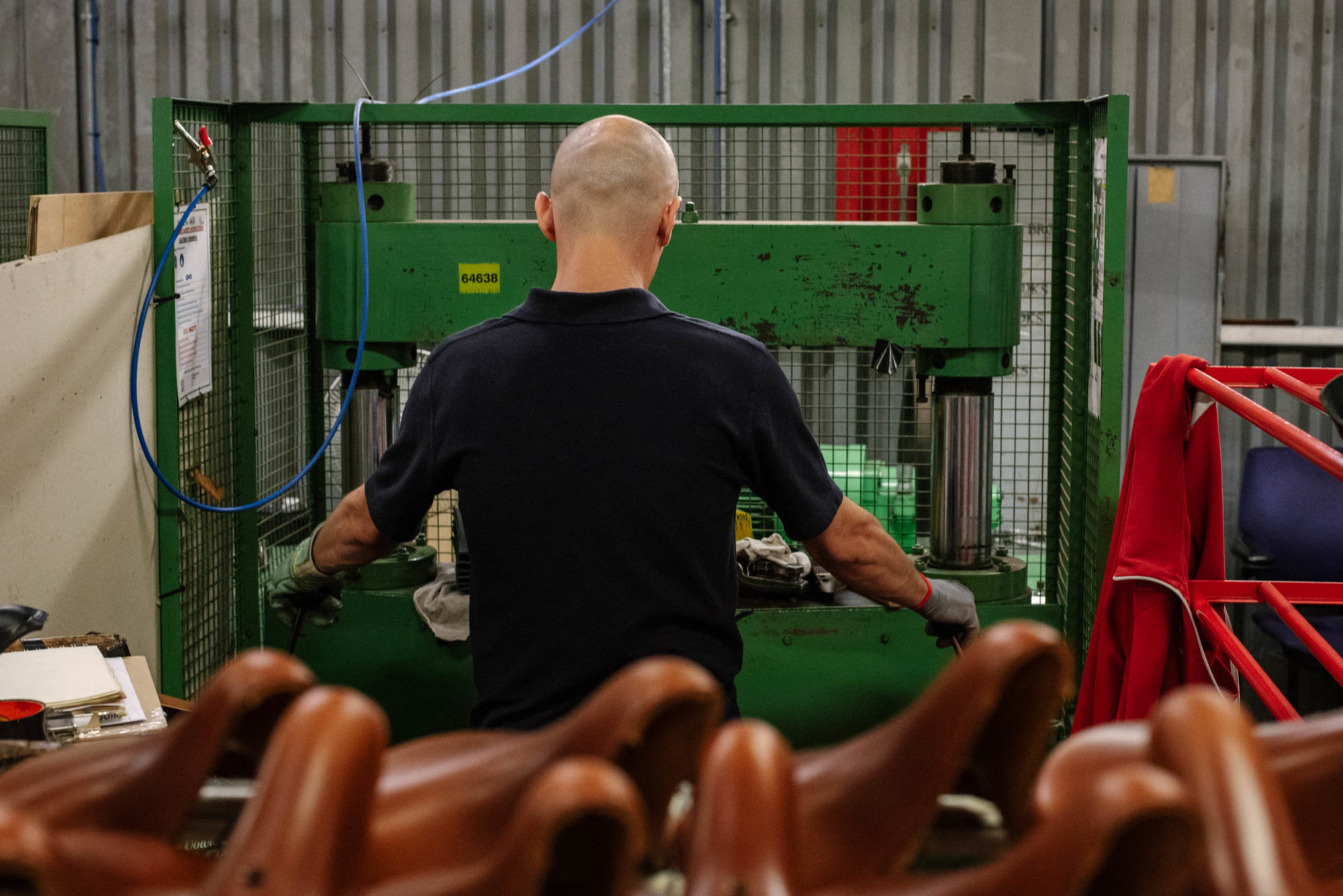
Your saddles clock up countless miles all over the world. If kept in good condition, what kind of life span can someone expect from a Brooks leather saddle?
Steve: We once had a visit from a 72-year-old gentleman who came to return his saddle to us, having decided that his riding days were over. He proudly told us that he had been riding this saddle since he was 15 years old!
Leather is a material that changes and develops a patina over time. What’s the best (and easiest) way for people to keep their leather saddle in the best shape possible?
Jim: Good maintenance of a Brooks saddle is key to its well-being and longevity. The two most important aspects to bear in mind are that, as time passes, the leather will both stretch and dry out. We recommend adopting a six-monthly regime of checking for both of these.
Applying Brooks Proofide dressing will nourish and rehydrate the drying leather (leave it on the leather for at least an hour to allow it soak through), and making a ¼ of ½ (clockwise) turn on the tension pin nut will help to keep the tension.
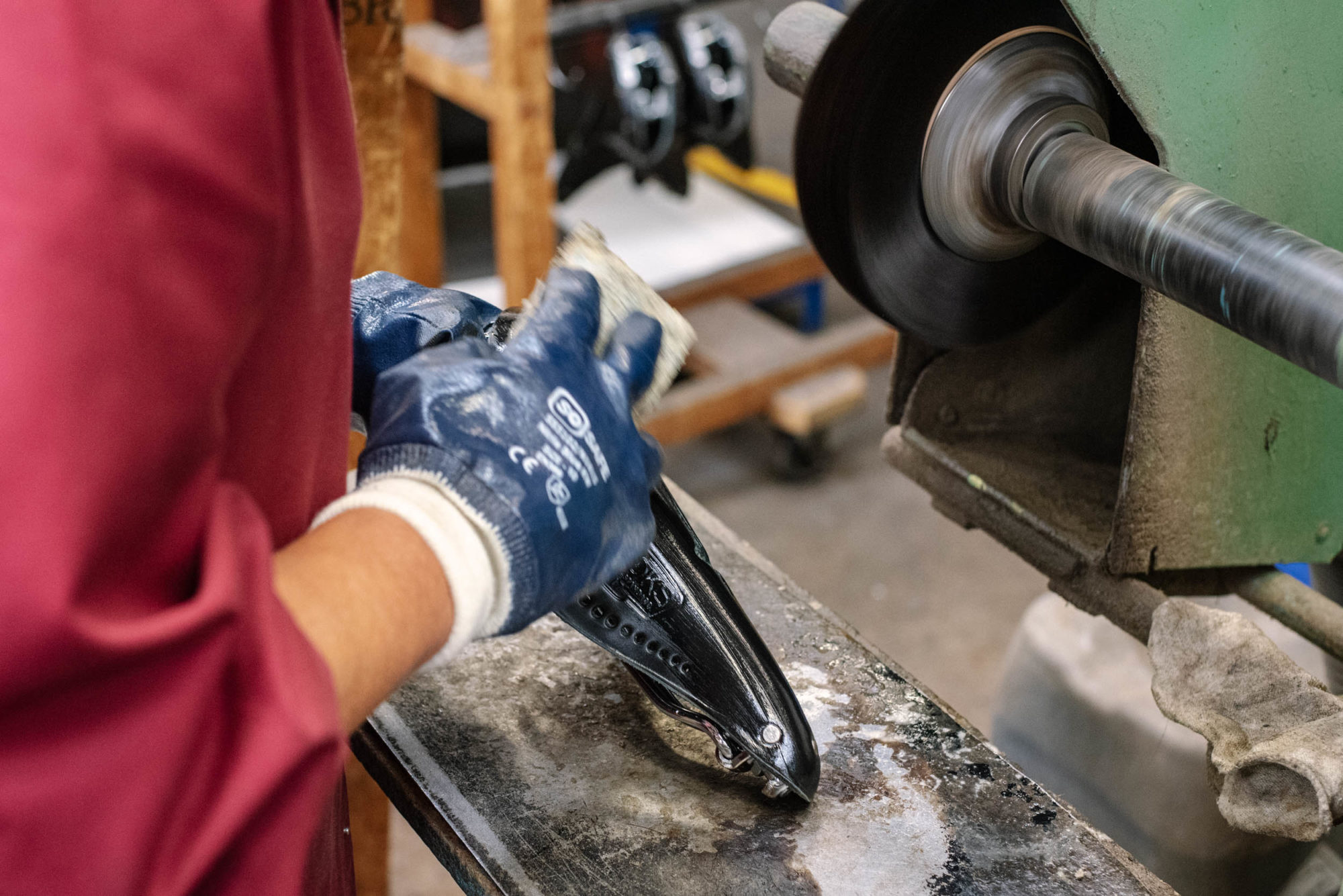
You offer a repair service for customers to have their saddles fixed if they get worn over time. Is this repair and reuse mentality one of Brooks’ core principles?
Steve: Yes, with Brooks and its followers, there’s an element of a sustainability ethos, for sure. In production, we use as much of the leather as we possibly can, making small leather pieces from the saddle offcuts and then selling the rest to a local business that produces tiny washers and gaskets. We use offcuts of the leather in other products, too. Our Plump Grips are made with leather washers. Further, all of our metal offcuts are sent to a recycling centre.
Many Brooks riders, however, develop almost an emotional attachment to their saddle over the years and especially to their leather top, which will have been naturally moulded and reshaped to match their autonomy during their many happy journeys. So, they are usually keen to keep the existing leather wherever possible.
Jim: When Brooks started, things were made to last. They weren’t supposed to wear out, and that’s something we have stuck with. Cyclists can often do simple repairs and maintenance themselves. Within the UK, saddles can be repaired by the same people who made them. Internationally, we have approved dealers who are trained to make repairs.
Lastly, anything else you want readers to know about Brooks?
Jim: I think it comes across that we’re a pretty traditional business, though innovation has also long been a part of that tradition. Brooks hasn’t spent much time standing still. Our core products have been remarkably consistent over the years, but we’re always looking closely and developing new products that are relevant and useful for our customers, moving into different, new markets as they change and emerge.
When we launched the Cambium saddles, the gravel market hadn’t taken off, but it turned out to be perfect. It’s a similar story with with e-bikes and cargo bikes. The bicycle has found amazing ways to endure and stay relevant since its inception, and we’ve been fortunate to be able to do the same.
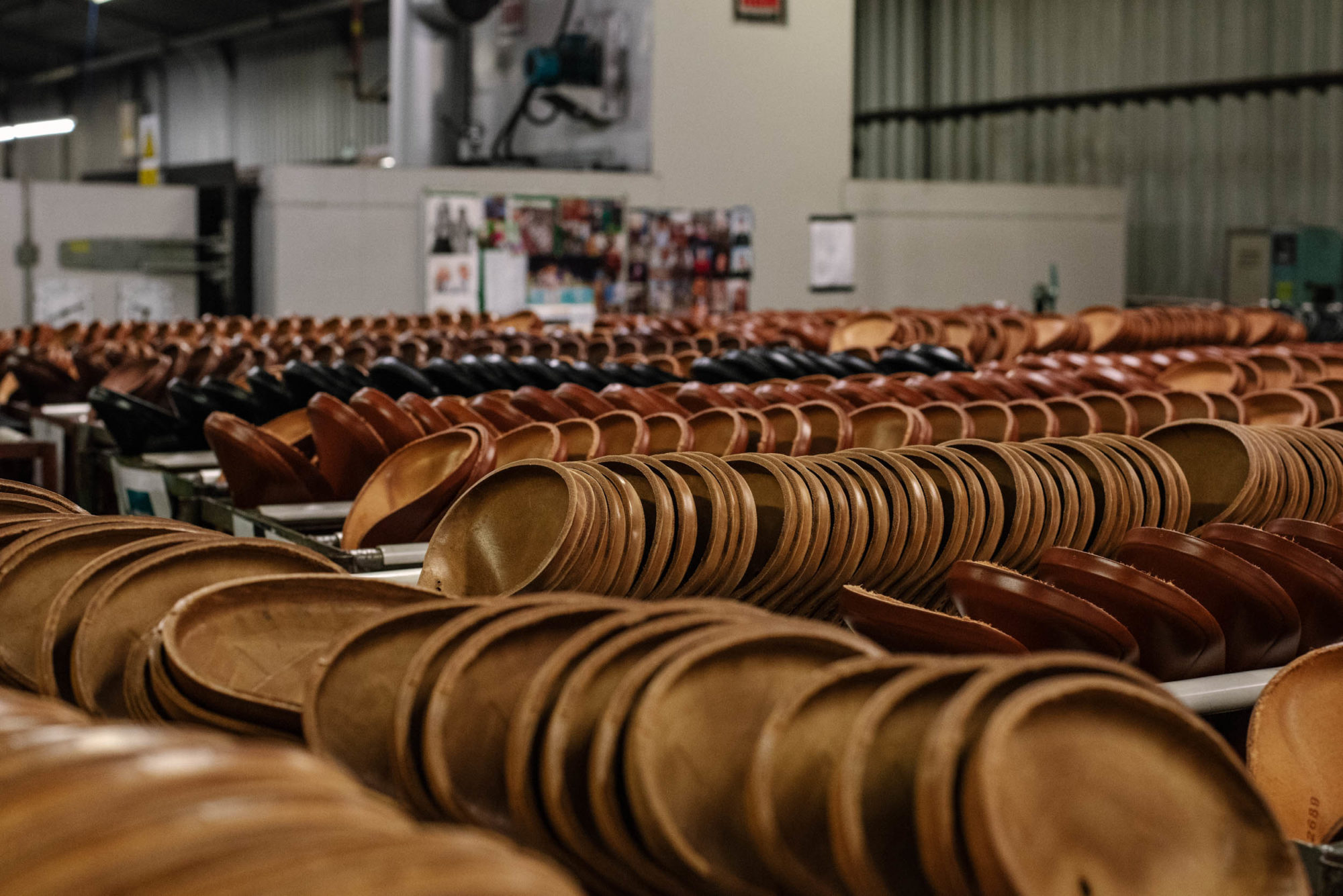
Related Content
Make sure to dig into these related articles for more info...
Please keep the conversation civil, constructive, and inclusive, or your comment will be removed.







